The post Top 11 Things to Do In Istanbul appeared first on The Expeditioner Travel Site.
]]>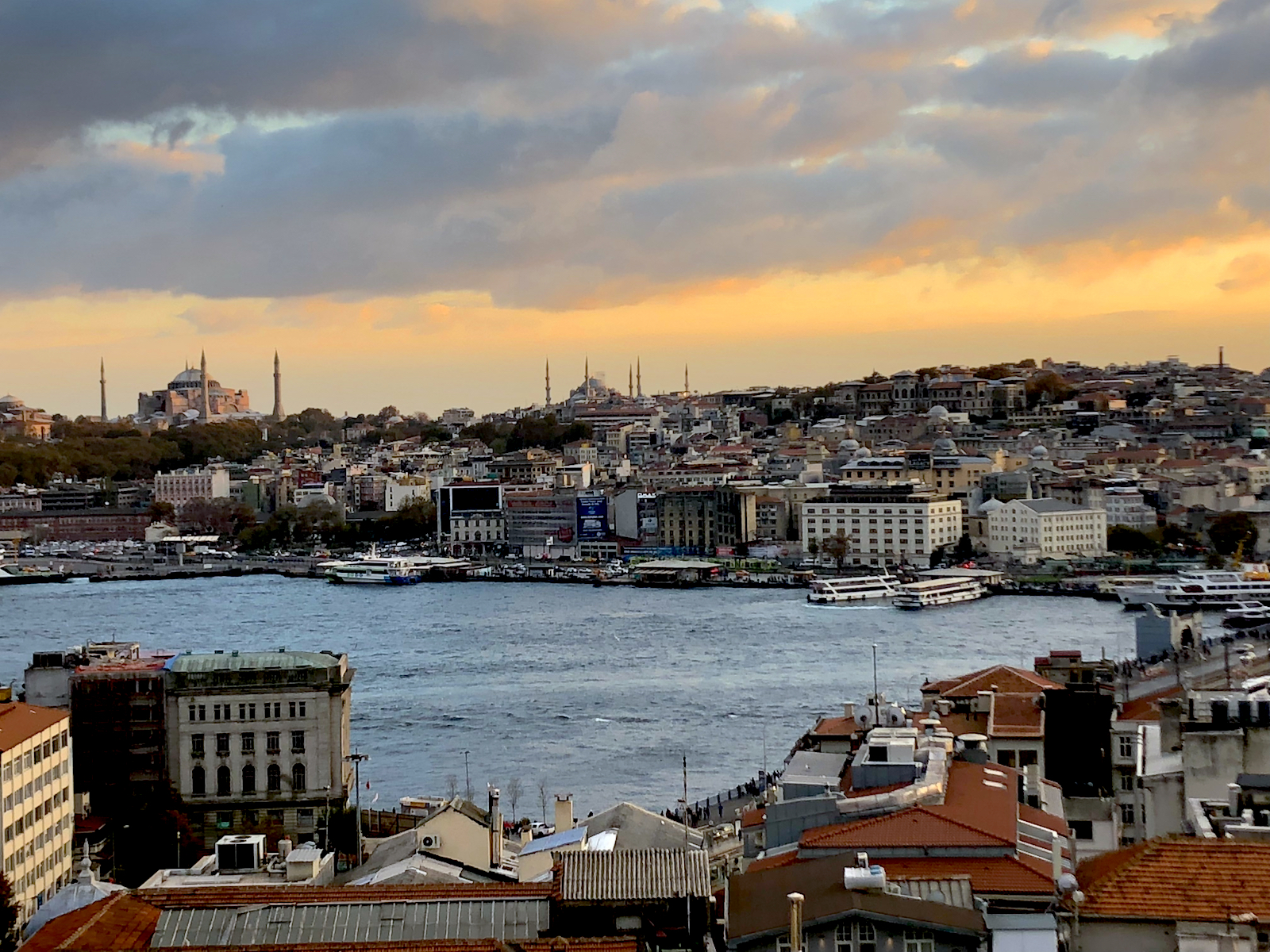
Finding the top things to do in Istanbul isn’t all that difficult since this is one of the great cities to visit in the world. If anything, the challenge is narrowing down which of the top things to do in Istanbul you can fit in depending on how much time you have there. With thousands of years of history, countless museums and attractions, dozens of interesting neighborhoods, a thriving restaurant, bar and cafe scene, and a population of over 15 million people, the number of things to do in Istanbul is endless.
For first-time visitors, or for those coming back again with the goal of seeing more of the city’s top sights, here are my picks for the top 11 things to do in Istanbul. Beyond this list, try to meet a local, strike up a conversation, and you will sure to have an another 11 ideas in a matter of minutes.

1) Süleymaniye Mosque
Standing at the top of a hill in Istanbul’s Golden Horn, Süleymaniye Mosque, or the mosque of Suleyman the Magnificent, is truly one of Istanbul’s greatest sights. Built by order of the sultan Suleyman I (also knowns as “the Magnificent”), the mosque was built over a span of 7 years between 1550-1557, and today still remains the largest mosque in the city — not a small feat given the number of mosques here.
Enter by way of the courtyard in the front, and once inside the mosque, you can gaze at the towering domes, the tallest of which rises 173 feet, and take in the ornately decorated ceilings covered in floral and geometric designs. Be sure to exit out the rear and visit the large terrace — a great spot to take pictures — where you will be greeted by a spectacular view of the Golden Horn and Bosphorus.
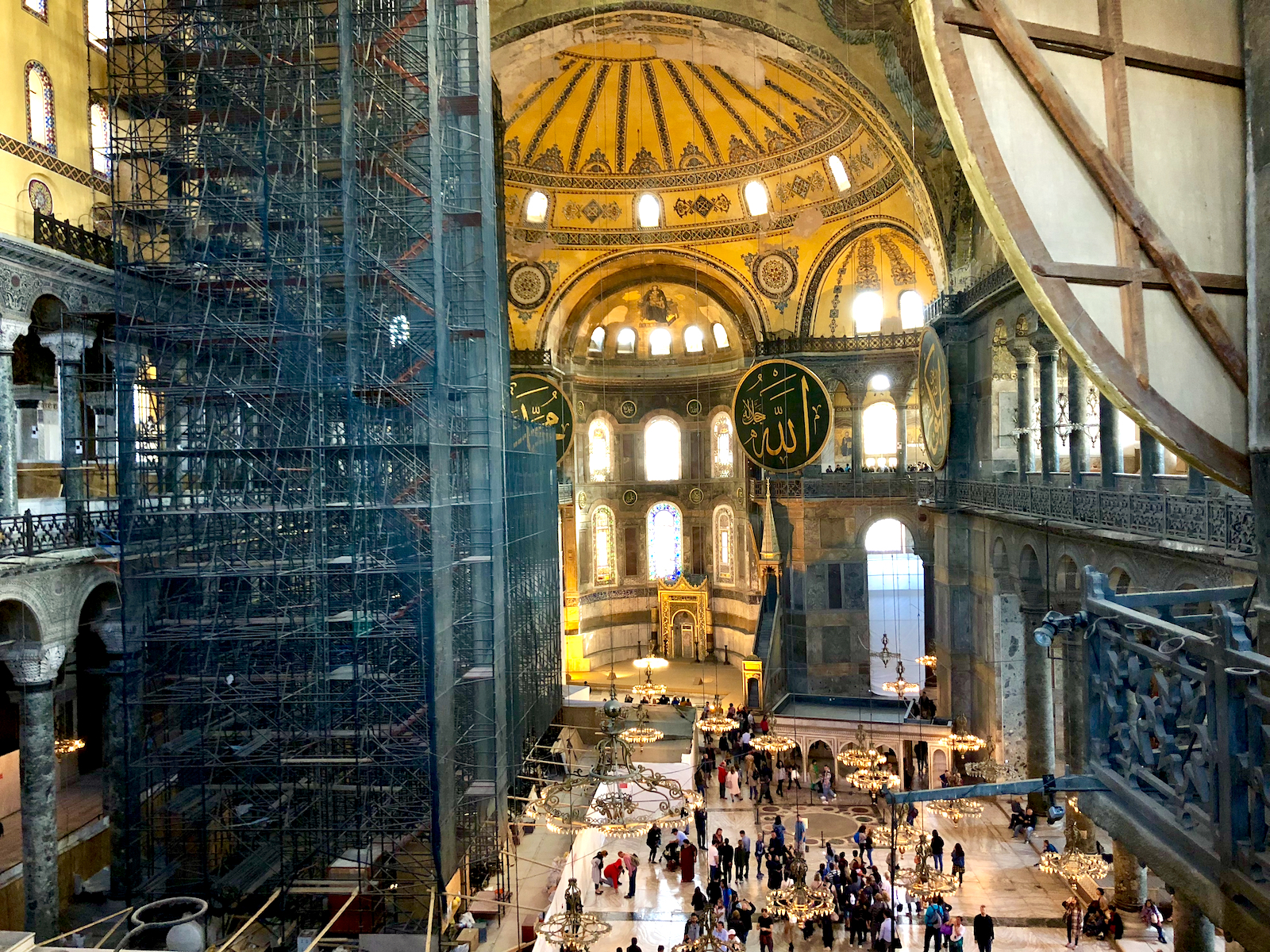
2) Hagia Sophia
Probably Istanbul’s best known attraction (next to its food), is the glorious Hagia Sophia (or “Aya Sofya” to the Turks). The building has a complex history. First built by the Byzantine emperor Justinian and consecrated as an Orthodox church in 537, the church was then converted over to a mosque by Mehmet the Conqueror almost a century later in 1453. Finally, in 1935, it was declared a museum by Atatürk and remains so for the foreseeable future. Declared a World Heritage by UNESCO, it is considered one of the greatest surviving examples of Byzantine architecture.
Make sure to set aside at least 2 hours when visiting Hagia Sophia. The lines to enter through security can be long, and once inside, you’ll want to take your time wandering the cavernous interior, including the upper floor where you can see the famous 12th and 13th-century mosaics depicting Christ.
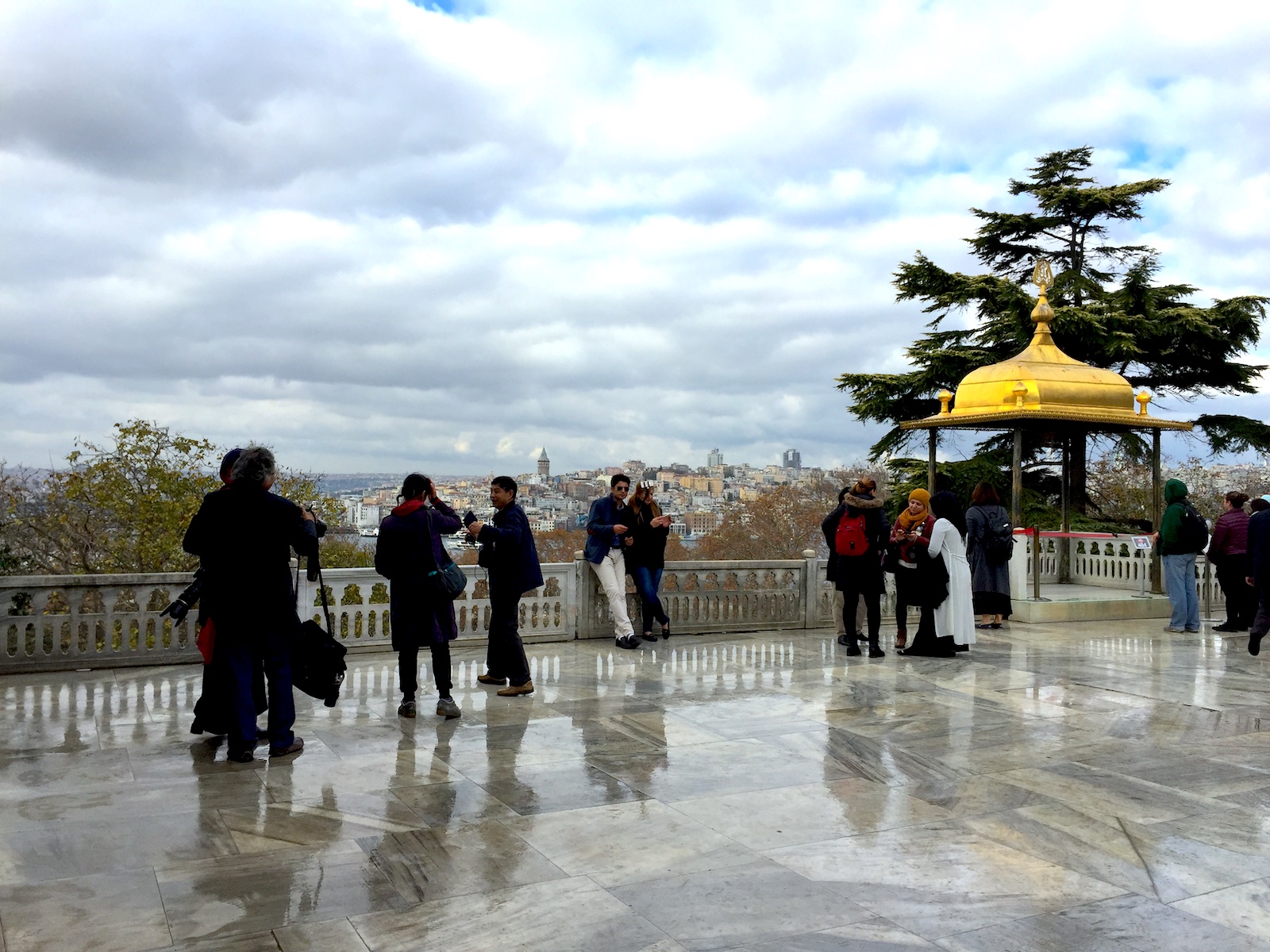
3) Topkapi Palace
Between the 15th and 19th centuries when it was the court of the Ottoman empire, Topkapi Palace was the place to be and be seen. Built between 1466 and 1478 by the sultan Mehmet II and located on prime real estate on the Golden Horn, the palace remains a spectacle to visit. Surrounded by not one but two massive gates, Topkapi Palace was once home to over 5,000 people. Each successive Sultan that lived here added their own touch, helping to grow it to the size you see today.
With a regular ticket you can visit the large kitchens, the Council Chamber where dignitaries were received and official business was conducted, and the private gardens and living quarters of the Sultan. Though a separate entrance fee, you would be missing out if you didn’t also visit the Harem, accessible after the second gate. The 300-room harem is a labyrinth of enclosures where over 300 concubines and the Sultan’s extended family lived, and where you can visit some of the ornate rooms where he and his wives spent a good amount of their time.
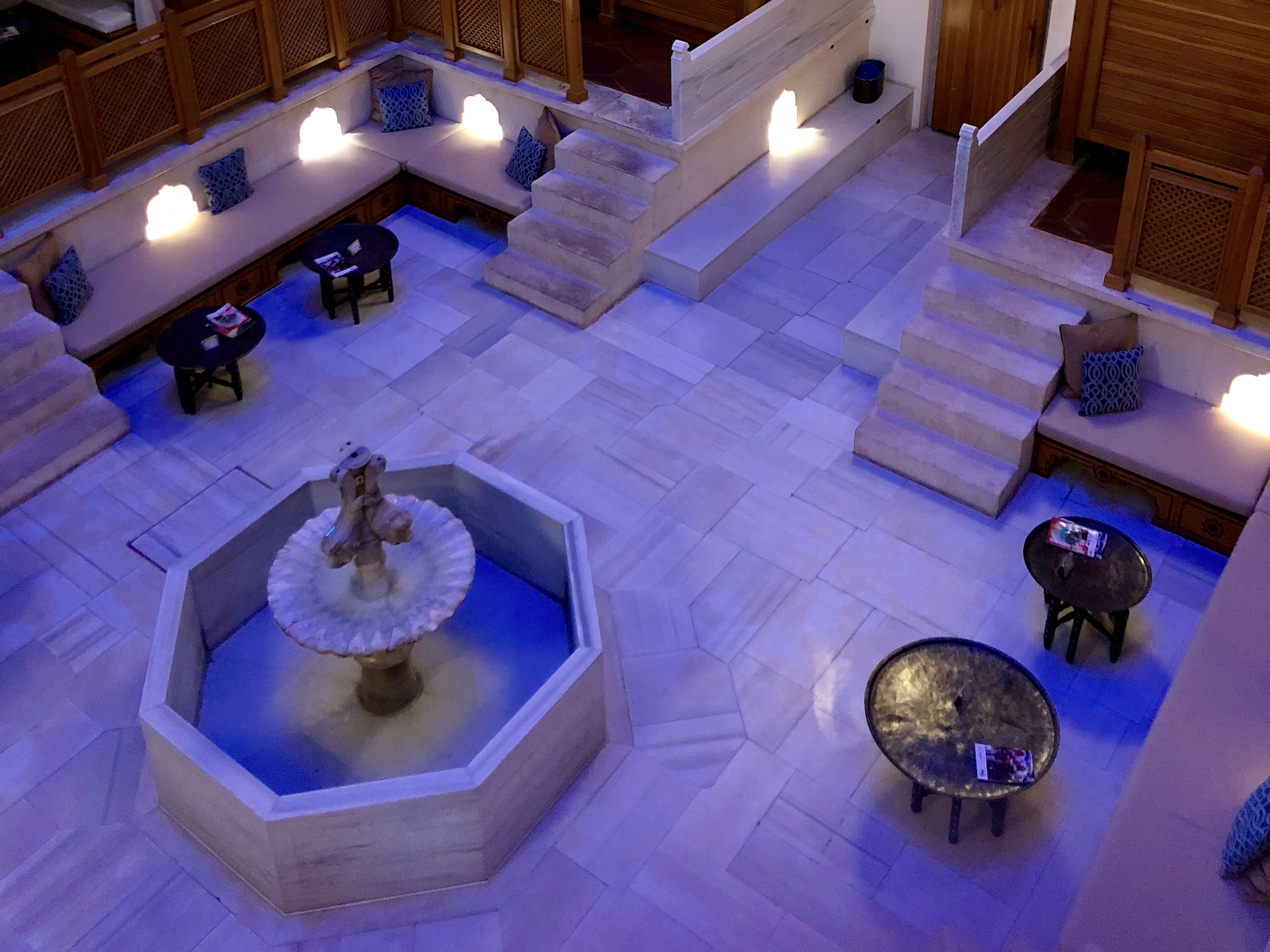
4) Visit A Hamam
Not so long ago, back when fresh water was less plentiful, Istanbul was home to over 200 hamams, or Turkish baths, where locals could go for a full body wash. Today, around 60 still exist, and with the advent of indoor plumbing, most hamams exist as tourist attractions today. Nonetheless, this unique bathing experience is a fun way to steep yourself in a bygone era. Closer to what you would experience at your traditional spa, you can still expect a personal attendant who will rinse, scrub and wash you down thoroughly using a hamam towel (lightweight, flat-woven and traditionally made from Turkish cotton).
For a convenient hamam close to the major attractions, visit the Ayasofya Hürrem Sultan Hamamı. Built in 1556 and named after the wife of Süleyman the Magnificent, its welcome foyer itself is an impressive sight, consisting of a multi-domed ceiling and wooden stairs leading to your changing rooms on several elevated levels. Set aside at least an hour and a half to allow yourself time to decompress with a tea and snack following your group scrubdown.
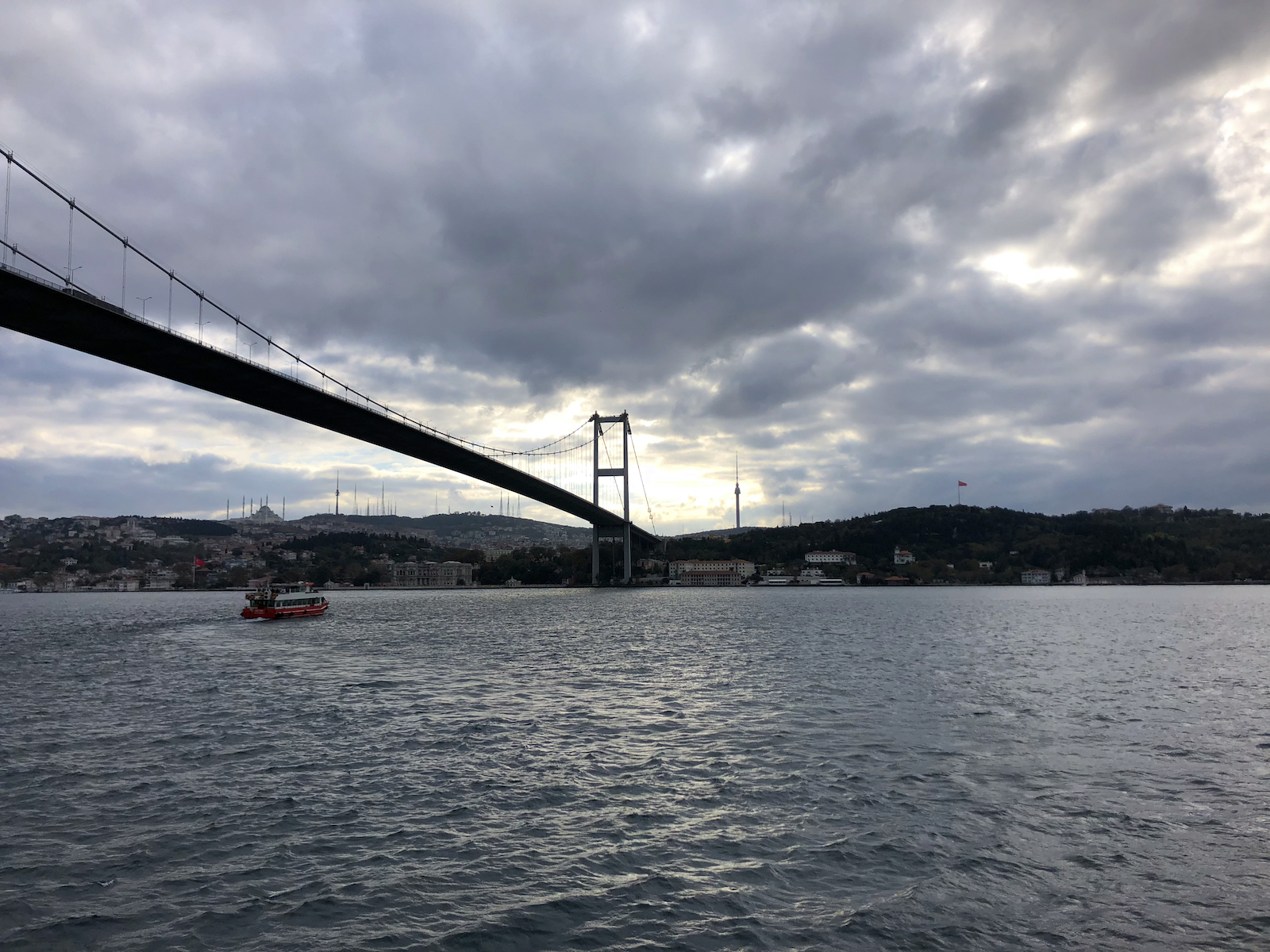
5) Take A Bosphorus Cruise
An argument can be made that it’s the Bosphorus, the natural straight that connects the Black Sea to the Sea of Marmara and the Aegean Sea beyond, that made Istanbul the city it became over the years. This natural waterway runs straight through the city, separating it from what is known as the European and the Asian sides. Most cruises on the Bosphurus last for about two hours and will take you north under the newly renamed 15 July Martyrs Bridge, further northward to the Fatih Sultan Mehmet Bridge, then turn around and head south towards the Golden Horn.
Along the way you will be treated to views of the various palaces and estates that the royal families and the city’s richest inhabitants once used as summer homes, including Kucuksu Palace and Dolmabahce Palace. For a truly traditional experience, buy a Simit (a Turkish circular bread covered in sesame seeds) from one of the ubiquitous vendors, and throw bits into the sky to one of the seagulls that are sure flock your boat as it makes its way along (just be sure not to stand directly below any).
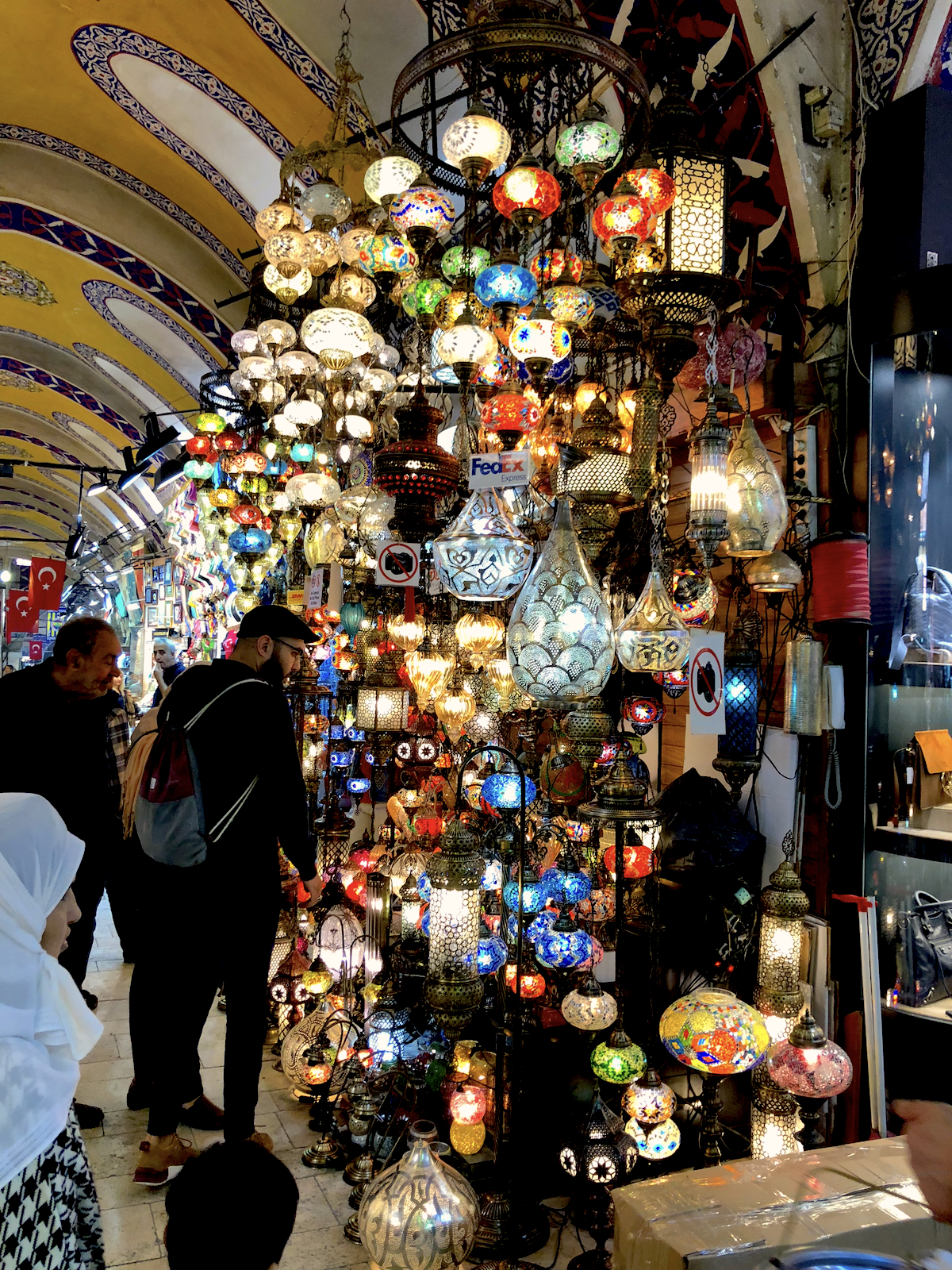
6) The Grand Bazaar and Spice Market
Perhaps nothing encapsulates Istanbul any better than its two most popular markets: the Grand Bazaar and the Spice Market. Chaotic, confusing, colorful, aromatic — one step into either market transports you back in time. The much larger Grand Bazaar is comprised of over 3,000 shops spread out over 7 acres, with shops ranging from the tacky and basic to high-end and unique. Beginning at one of the main entrances, the best way to navigate is to simply let yourself get lost among the cramped alleyways.
When you’re ready to leave, try to orient yourself and exit north and head to the Spice Market, just a short walk away. Here the smaller market is made up of endless stalls devoted to selling various spices, Turkish delight, dried fruits, teas and other related items. Come hungry before lunch as you assuredly will be handed sample after sample from enthusiastic shop owners.

7) Karaköy and Beyoğlu
Beyoğlu, sometimes still referred to as Pera, and Karaköy are the pulsing heart of the city. Packed with restaurants, bars, boutique hotels, shops and non-stop foot traffic from both locals and visitors, these two neighborhoods are worth a day alone to wander around. Start by crossing the Galata bridge from the Golden Horn and into Karaköy and head to the one-stop Tünel, an 1,880-foot-long underground funicular dating back to 1875, making it the second-oldest subway in the world. From here you can backtrack and visit Galata Tower and the Istanbul Museum of Modern Art. Then head to the famous İstiklal Avenue where at any given time of the day, tens of thousands of people are wandering along the pedestrian-only street. Finally, you will be let out at Taksim Square where you can take in the views of this giant open space.
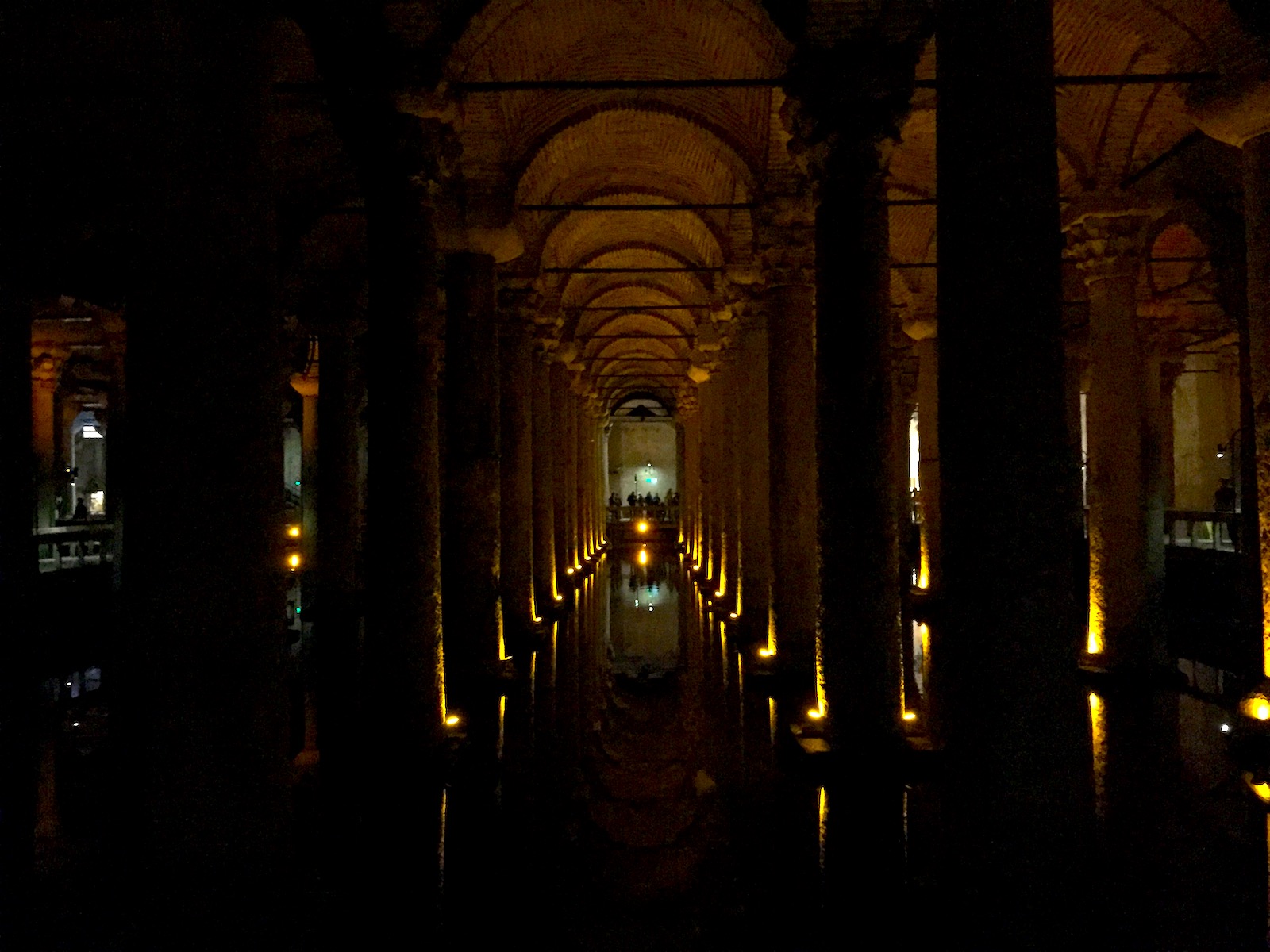
8) Basilica Cistern
Just a short walk from Hagia Sophia and down a steep set of stairs is the Basilica Cistern, one of Istanbul’s most magical, subterranean sites. Built in the 6th century during the reign of Byzantine Emperor Justinian, the Basilica Cistern was the largest of the many hundreds of cisterns that once stored fresh water for the city’s inhabitants. Visiting today, the underground expanse is moodily lit, giving it an air of mystery as you wander past the 336 columns that support the structure along the elevated plankways that separate you from the water below. For its most famous sight, head to the northwest corner and find the bases of the two columns that are decorated with the haunting image of Medusa.

9) Have a Giant Breakfast
Breakfast in Turkey, or kahvalti, is a daily feast that will make you forget all about the wimpy brunches you’re used to back home. Let’s start with the foods. You should expect lots of cheese, including beyaz peynir (similar to feta) and kasseri (a medium-hard cheese made from unpasteurized sheep milk), a variety of breads including simit, the sesame covered circular bread that is often used to make mini breakfast sandwiches, lots of flavors of jams such as fig, apricot and cherry, butter and other spreads to go along with said bread, a good variety of fruit and olives, and if you’re lucky, sucuklu yumurta, a mixture of eggs and spicy sausage. Of course, this is accompanied by caffeine, usually tea, but for tourists visiting the country, you can rest assured that you will be able to have a cup of strong Turkish coffee as well.
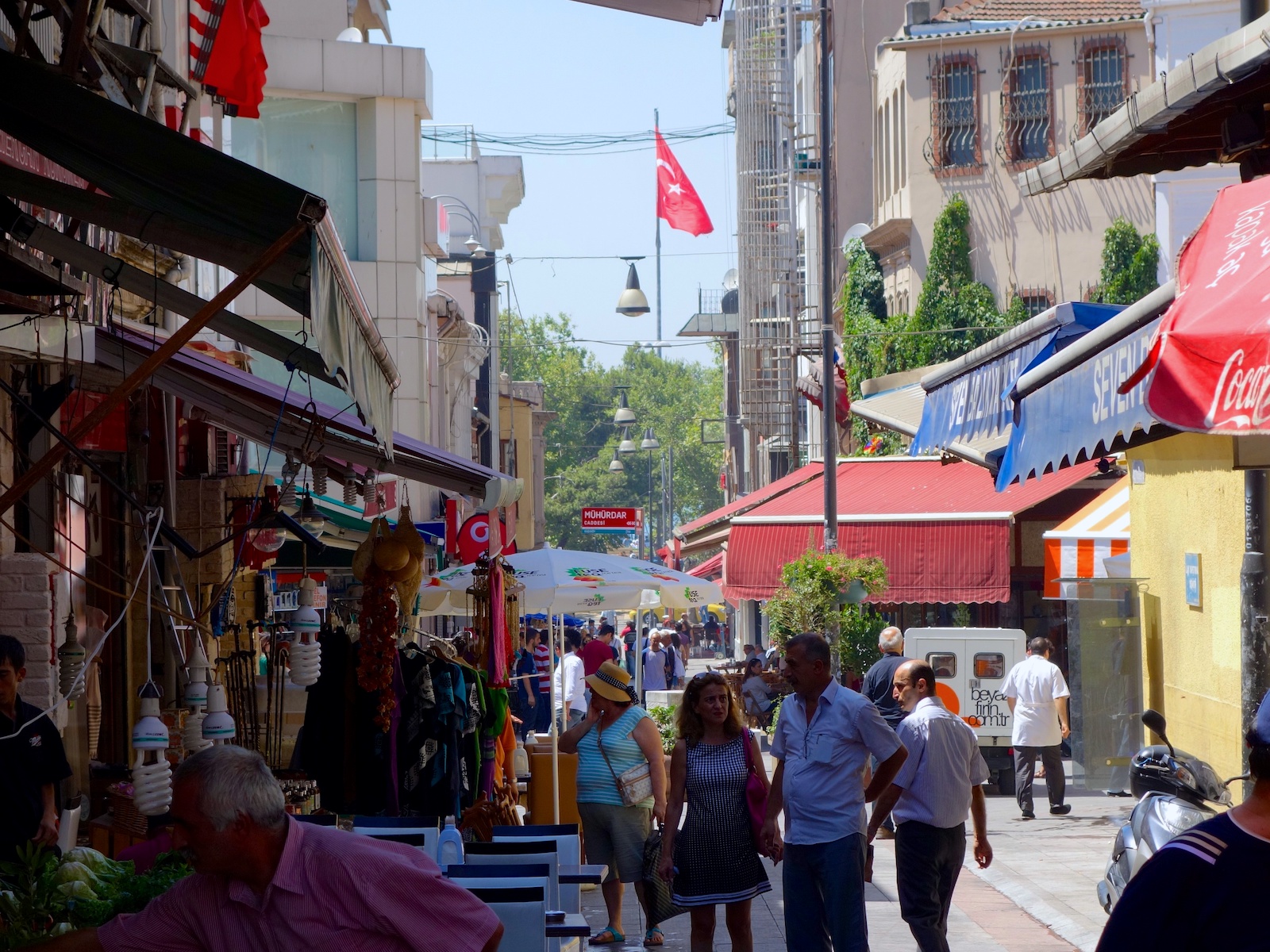
10) Visit the Asian Side
One of the most common refrains you will hear from local İstanbulites is that if you have time, you should make your way across the Bosphorus and visit the far less visited “Asian side” of Istanbul. Here, they tell knowingly, is where you you go to fall in love with Istanbul. Far from the crowds, the Asian side is much less busier, cleaner and more lush that its European counterpart.
Start by ticking off many of the grand palaces you saw during your Bosphorus cruise, including the ornate, 19th-century Beylerbeyi Palace and Adile Sultan Palace, the former royal residence of Ottoman princess Adile Sultan and a great place to have dinner (at Borsa Restaurant) with its unforgettable views. Be sure to wander around the walkable neighborhood of Moda with its sidewalk cafes and boutique shops. For a truly spectacular view of the city, make your way to Çamlica Hill. At 879 feet, the view south over the city is unparalleled. At the top is a public park with teahouses, cafes and a restaurant.
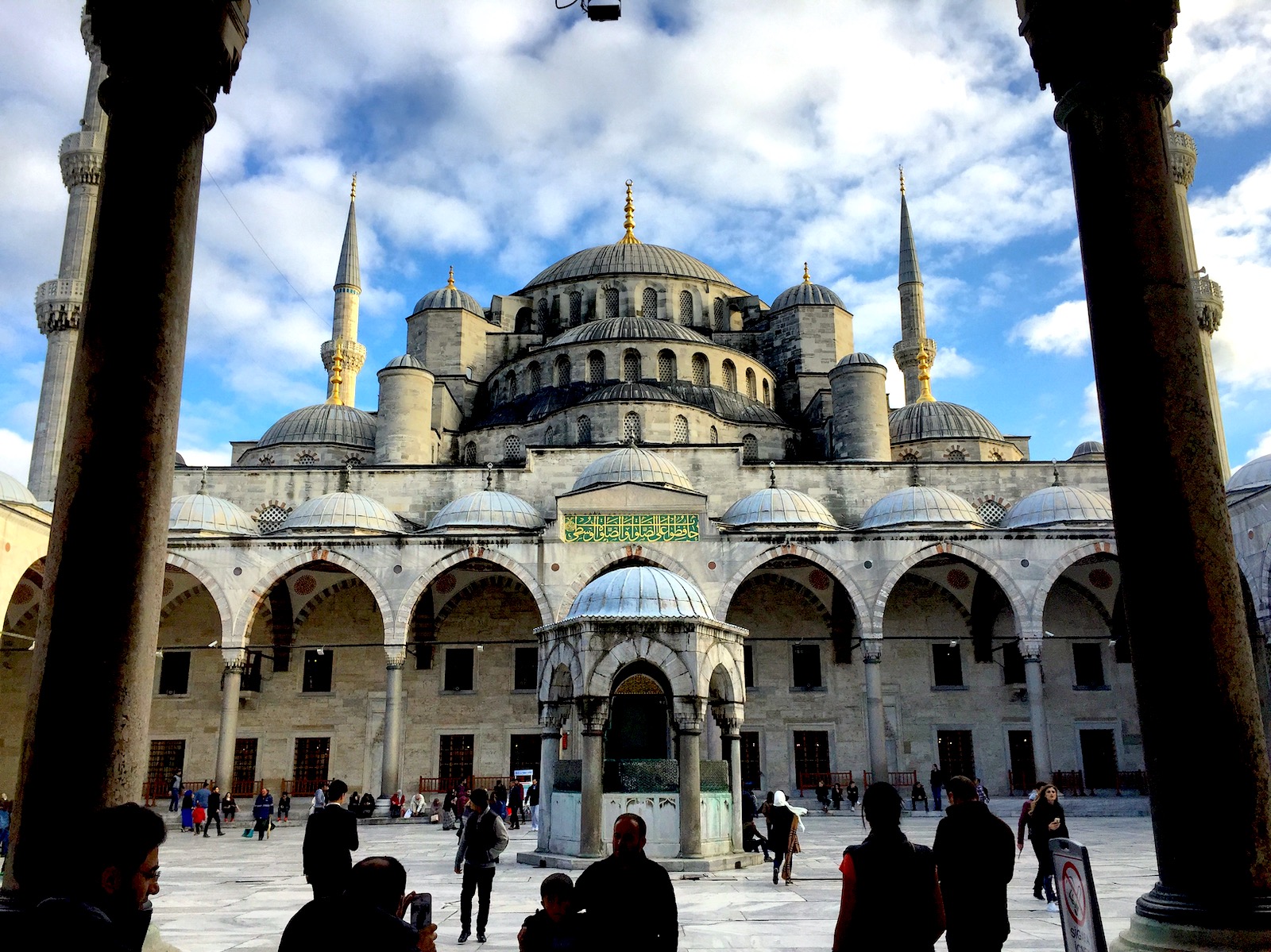
11) The Blue Mosque
Sultan Ahmed Mosque, but more popularly known by visitors as the Blue Mosque due to its distinctly blue interior, was built by Ottoman sultan Ahmed I between 1609 — 1616. If it seems as impressive as its neighbor, Hagia Sophia, there’s a reason for that: it was built in direct competition in an effort to surpass its beauty. Surrounded by six towering minarets and curvaceous exterior, the building was and remains today an architectural wonder. Inside, the mosque is decorated with over 20,000 İznik tiles and has 260 stained glass windows. Be sure to visit early as admission is regulated due to its popularity.

What to Fly
Turkish Airlines is the undisputed king when it coms to flying to Istanbul, the airline’s main hub. With over 338 planes flying to over 307 different destinations in 122 countries, it’s almost guaranteed that Turkish Airlines will offer you the best route to Istanbul. Even better, the new state-of-the-art, $12 billion Istanbul Airport will be the home for all flights beginning in March of 2019, and when it becomes fully operation in 2023, it will be the world’s largest airport. Turkish Airlines currently flies to nine cities in the United States and two in Canada, so it’s not only an airline with some of the world’s best service, it’s also one of the most convenient.
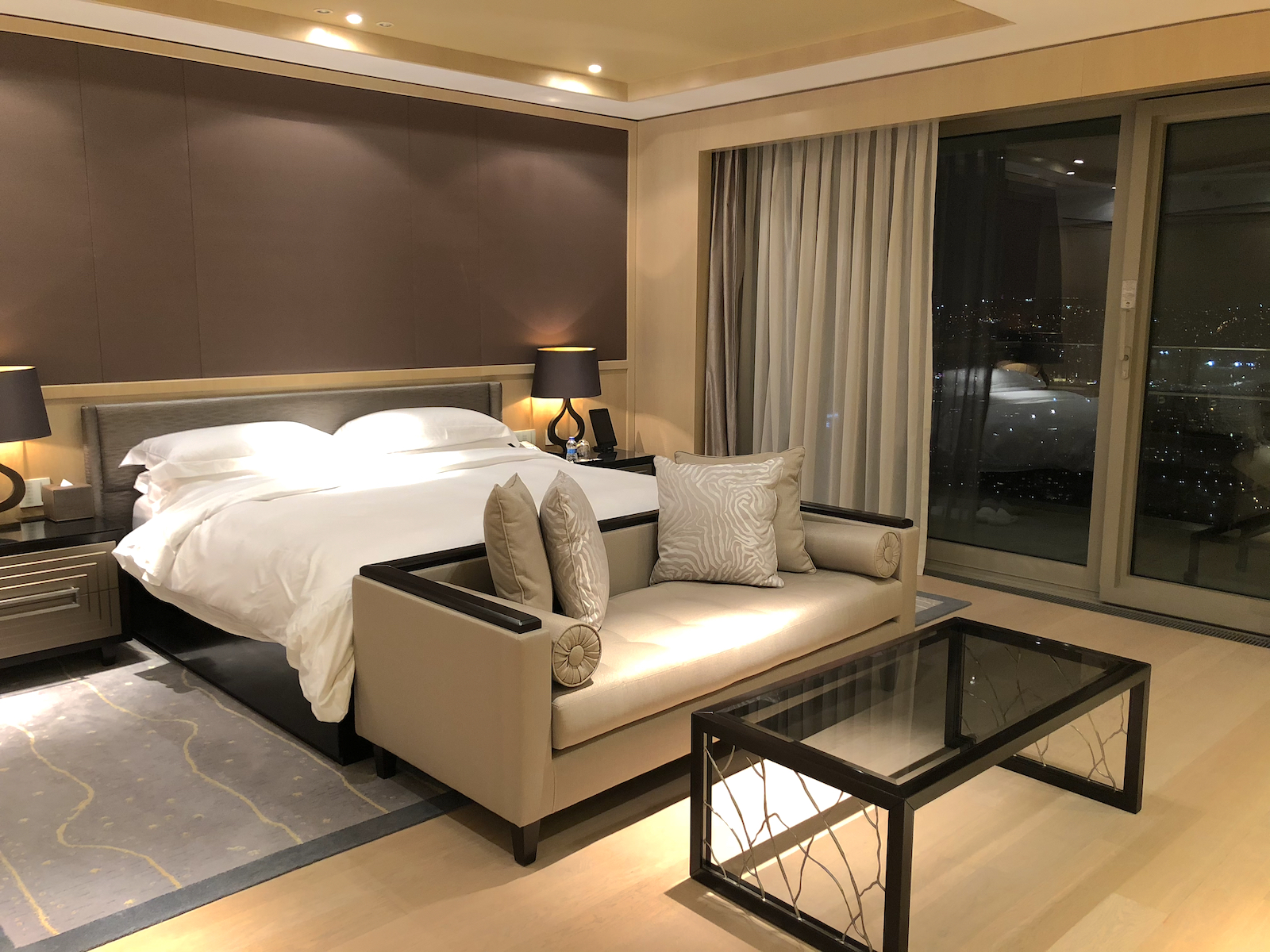
Where to Stay
If you’re looking to splurge a bit, the Raffles Istanbul is a great luxury hotel to call home in Istanbul. Located near the banks of the Bosphurus and above the Zorlu Center, a combined upscale shopping center and performing arts center, the hotel is located far enough from the bustle of the city to relax, but close enough so that most of the major sights are just a short trip away. Opened in 2014, the hotel features a spa, the mediterranean restaurant Rocca Restaurant, and the lively Long Bar. Be sure to try to book a room on the eastern side of the property that looks out over the water — the sprawling views of the Bosphorus and the 15 July Martyrs Bridge are spectacular both at night as well as during the daylight hours.

Special thanks to Turkish Airlines, Turkish Airlines New York Office Corporate Department, and Crystal Concepts for providing assistance with this article.
/
 Matt Stabile is the Founder and Editor-in-Chief of The Expeditioner. The Expeditioner began in 2008 and is headquartered in New York City. You can read his writings, watch his travel videos or contact him at any time at TheExpeditioner.com.
Matt Stabile is the Founder and Editor-in-Chief of The Expeditioner. The Expeditioner began in 2008 and is headquartered in New York City. You can read his writings, watch his travel videos or contact him at any time at TheExpeditioner.com.
The post Top 11 Things to Do In Istanbul appeared first on The Expeditioner Travel Site.
]]>The post A Cinematic Tour Of Turkey appeared first on The Expeditioner Travel Site.
]]>“With My Eyes Closed” is a cinematic tour of Turkey from New Zealand-based filmmaker Justin Heaney. Justin shot this stunning montage of the enigmatic country during the course of two recent trips there, which included stops in Cappadocia and Istanbul.

/
 Matt Stabile is the Founder and Editor-in-Chief of The Expeditioner. The Expeditioner began in 2008 and is headquartered in New York City. You can read his writings, watch his travel videos or contact him at any time at TheExpeditioner.com.
Matt Stabile is the Founder and Editor-in-Chief of The Expeditioner. The Expeditioner began in 2008 and is headquartered in New York City. You can read his writings, watch his travel videos or contact him at any time at TheExpeditioner.com.
The post A Cinematic Tour Of Turkey appeared first on The Expeditioner Travel Site.
]]>The post 10 Must-Try Budget Desserts In Turkey appeared first on The Expeditioner Travel Site.
]]>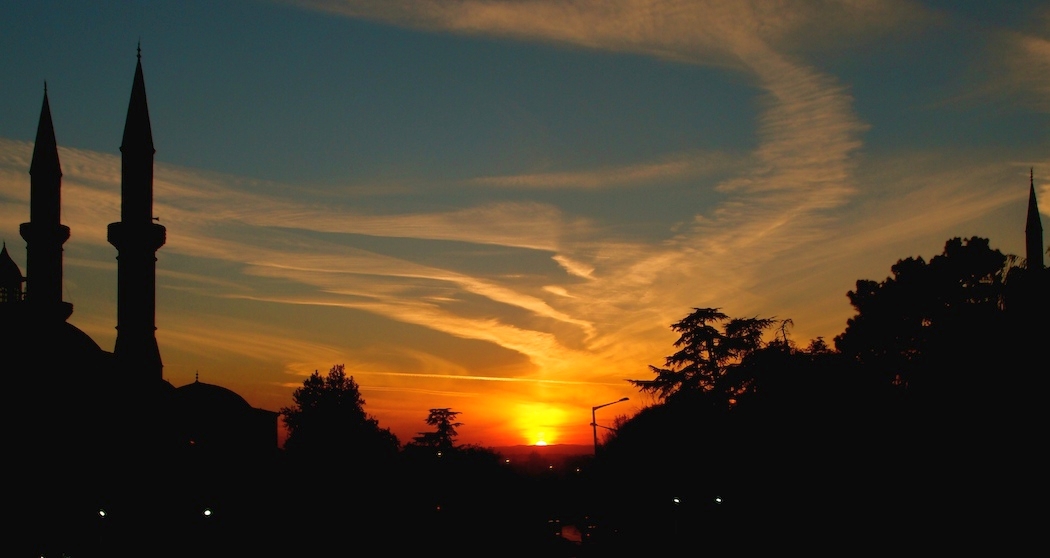
After traveling the world as a nomad for a few years now, I’ve learned that it isn’t always pretty, especially when it comes to tasting a country’s most popular dishes. When you’re on a tight budget, you are typically limited to freeganism, bulk foods that can easily be carried and prepared (like pasta) or cheap things from a corner shop or grocery store.
Desserts and other non-essentials are rarely included in the allowance, unless you are lucky enough to find a particularly cheap cafe or bakery. Most people travel in order to gain a new experience in a new place, and food should not be left out of this equation. Luckily, Turkey is a country that offers very cheap authentic meals and even cheaper sweets. From specialty shops to confections served from vendors on the street, this country is perfect for a frugal foodie.
Throughout my travels and time spent living in Turkey, I was continually amazed to see the variety of sweets, from creamy chocolates and airy pastries to thick honey and brightly colored fruity concoctions. The best Turkish desserts, though, are the ones loaded with the array of nuts that the country produces.
Many of these desserts are so sweet that you only need a bite to savor the flavor for hours. The Turks are very proud of their confections, and will almost always offer you a sample if you’re walking by their shop or stand. It seems a shame to miss out, even if it’s just a little bite.
Here are the top ten easiest, cheapest, and most delicious desserts to try while visiting Turkey.
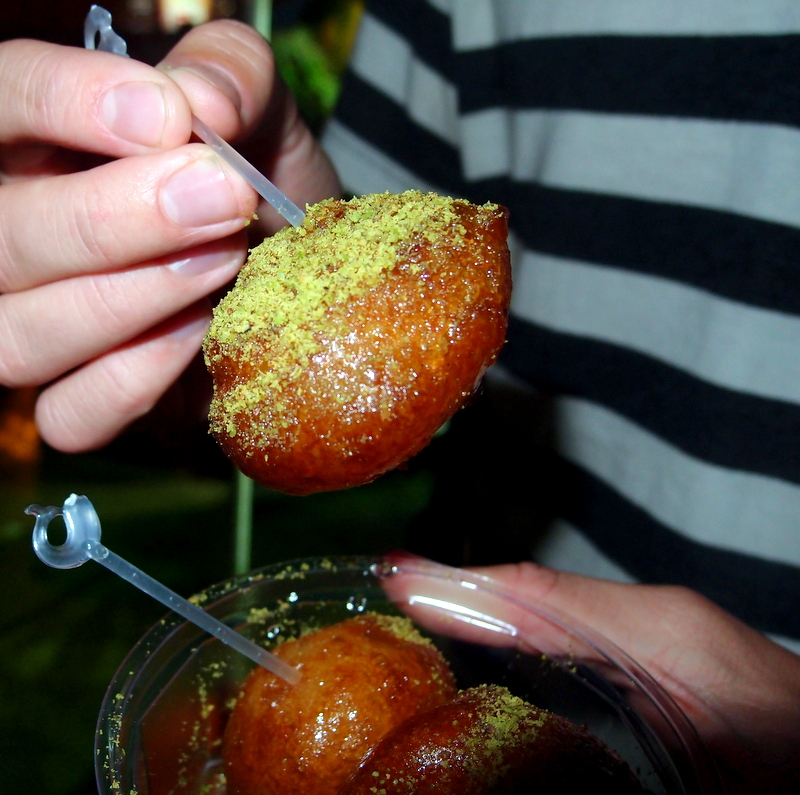
1) Lokma
Lokma is one of the versions of a Turkish donut. It’s made from a light dough that is soaked in a simple syrup and covered in pistachio shavings. The syrup makes the donut much denser, so I recommend only going for one on your first try. You also will want to use the picks provided to prevent your hands from sticking like glue for the next few hours.
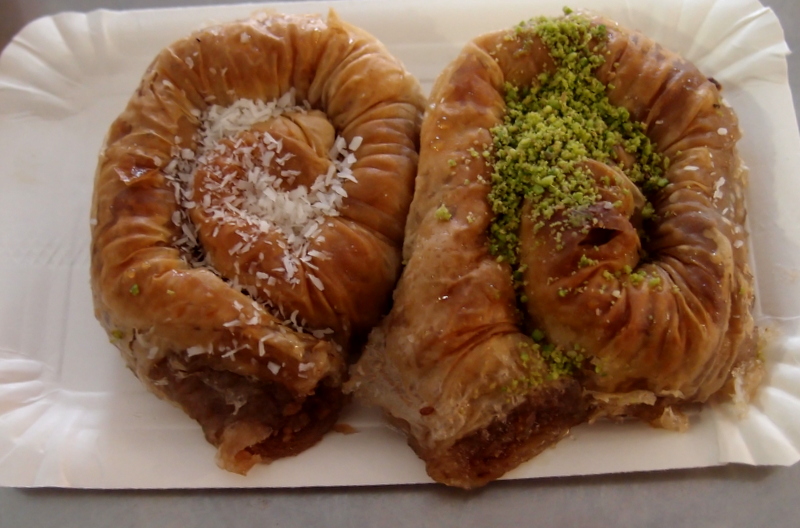
2) Baklava
Forget anything else you’ve heard about the birthplace of baklava- this dessert is 100% Ottoman in origin, and any Turk will have no problem telling you so. A rich, sweet pastry made with layers of fine filo dough, baklava is by far the most popular dessert in Turkey and the surrounding Middle Eastern countries. Chopped nuts with honey and/or syrup are held together by many layers of filo and left to set. The dessert becomes quite dense, so one small piece should leave even the most serious sweet tooth feeling beyond satisfied.
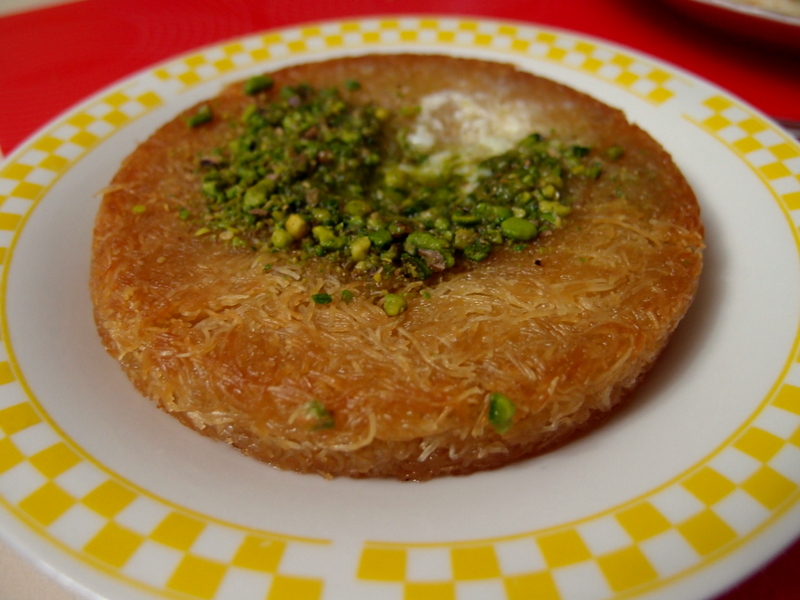
3) Künefe
The Turkish spin on cheesecake, künefe is one of my favorite desserts, not just in Turkey, but in the world. A shredded wheat-like mixture made from either semolina or thin noodle shreds is formed into a pasty with, you guessed it, syrup. The pastry is also sometimes flavored with rose or citrus fruit water. It encapsulates a thick slice of mild white cheese, and is typically topped with chopped pistachios.
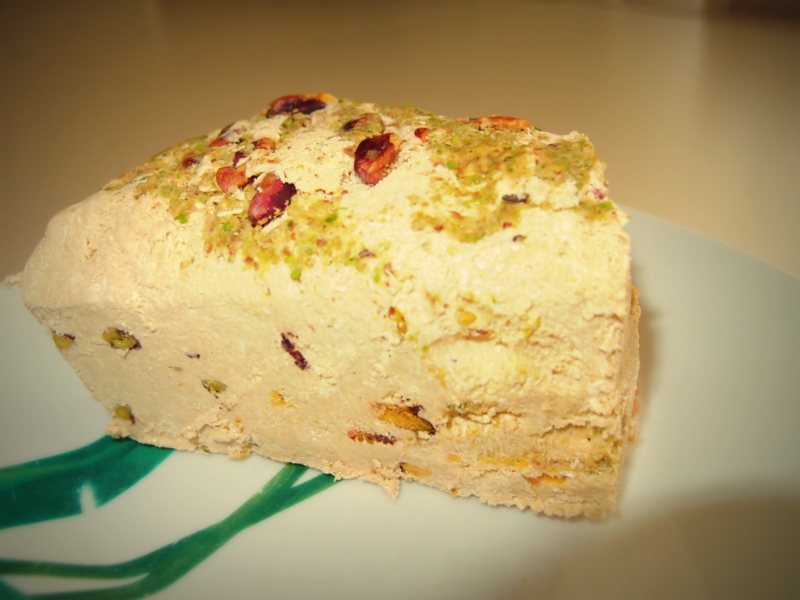
4) Halva
This dense confection is popular across the Middle East and the Balkans as both a breakfast spread item and a treat. It can be made from either semolina grains or tahini (sesame paste) and various types of nut butter, though the tahini flavor adds a savory aftertaste and is much more delicious.
Like most other sweets from the region, the best halva is covered and stuffed with pistachios. The sweet comes in a bulky block which can be sliced thinly or in large chunks. Halva can be found in all dessert bakeries, as well as in packages in corner shops. It doesn’t always taste overly sweet going down, but beware: it is addictive, and more than a few small pieces will leave you feeling a bit ill. There is no bravery in eating too much halva.
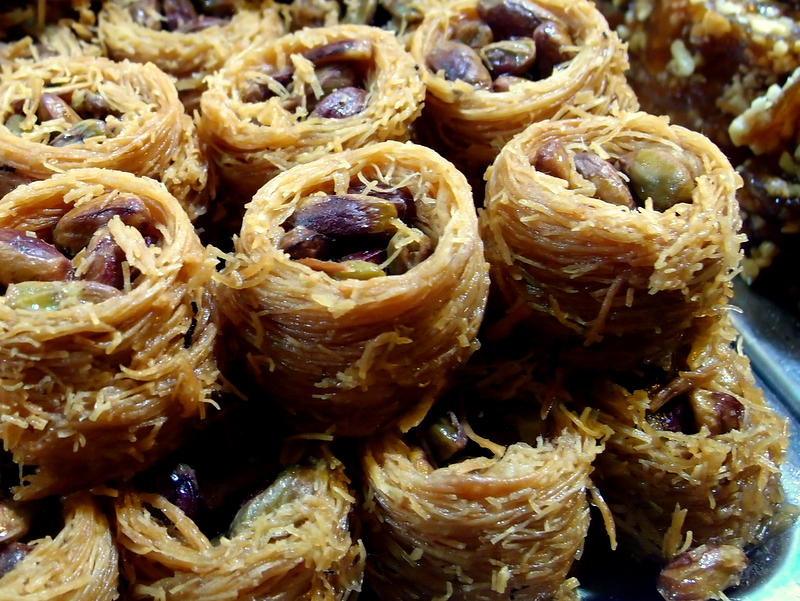
5) Honey and Nut Bowls
I’m not quite sure of the official name for this dish, as it was always communicated to me as “honey and nut pastry”– confusing, as most Turkish desserts contain honey, nuts and pastry.
In this treat, the same shredded noodles that are used in künefe are formed into a bowl-like structure and held in place by honey. The bowls are then filled with nuts. This is a go-to sweet for those who want to keep it fairly simple. Although still sweet from the syrup, the base taste of the nuts balances the dish perfectly. You can sometimes test drive a single bowl, but usually you will be required to buy several.
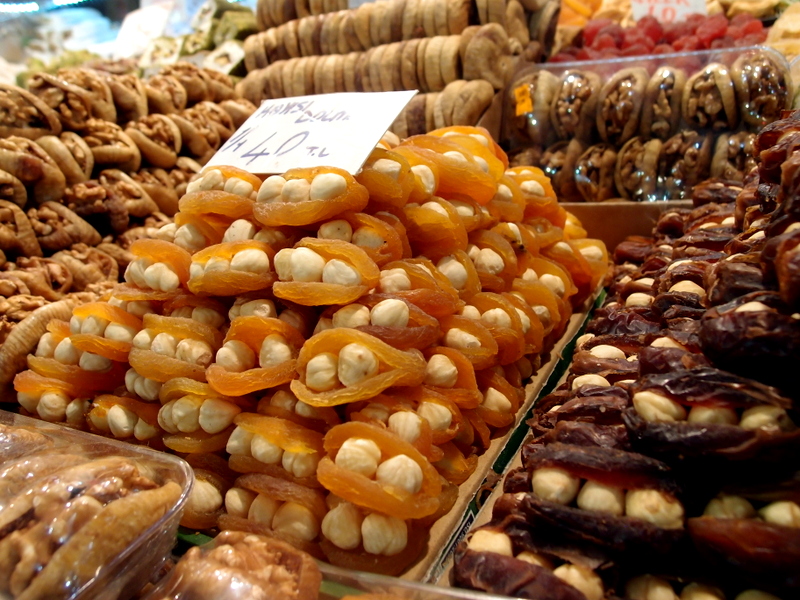
6) Dried Fruit Stuffed With Nuts
Are you sick of the overly sweet, bite-size only Turkish desserts I’ve listed thus far? You’re in luck! Apart from syrups and nuts, the Turks specialize in dried fruit. One of my favorite snacks while meandering the streets of Turkey was dried fruit stuffed with nuts. Finally, a dessert without syrup and that doesn’t leave you feeling guilty. Dried figs, apricots, and dates stuffed with hazelnuts were a few of my favorites.
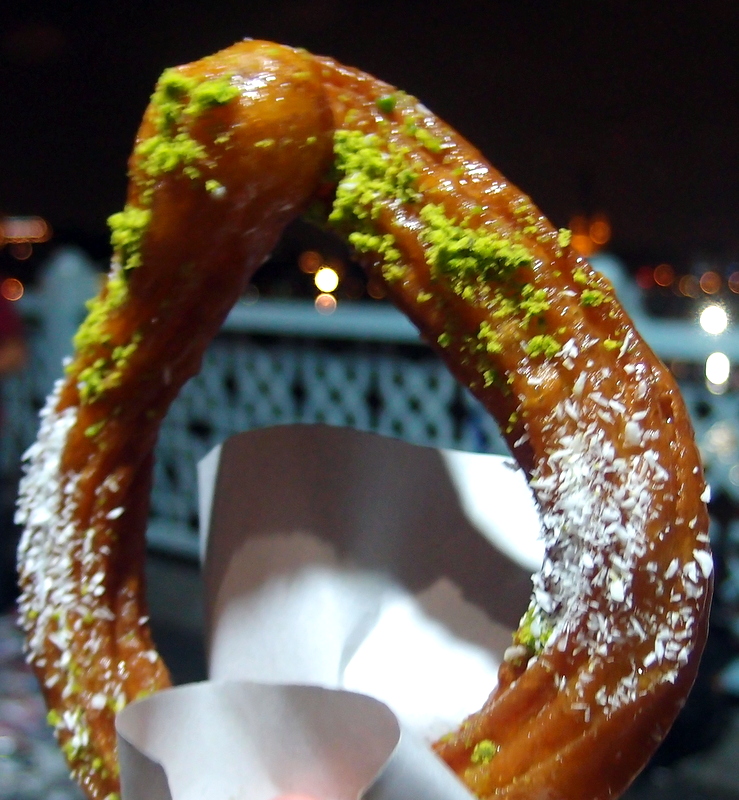
7) Halka Tatlisi
Yet another syrup-soaked pastry with crushed pistachios, but this time there’s a slight twist: a deep-fryer. Halka tatlisi is the Turkish equivalent of a churro with a glaze. These treats come in bent circles or small rectangles, but the former is the one that you’ll usually find at a street vendor. For 1 Turkish Lira ($0.50), you and your friend can get a filling treat on the street.
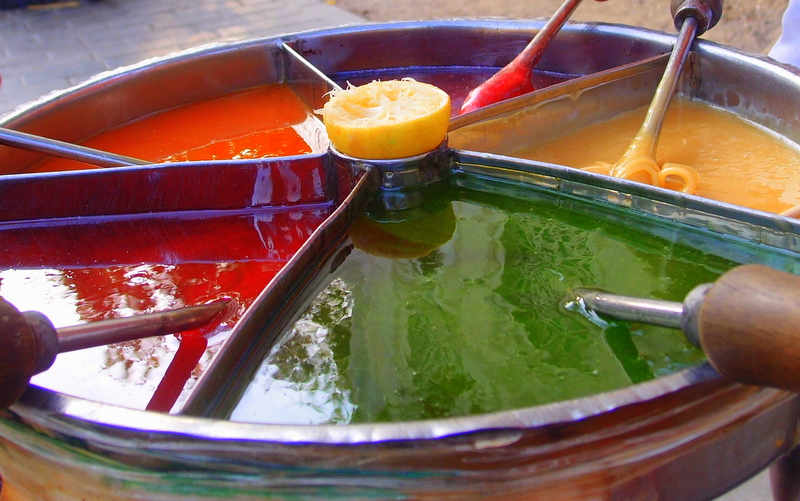
8) Hand-Turned Lollipops
I’ve seen a lot of things in my travels, but Istanbul was the first place where I found a hand-turned lollipop. The stretch of roads and bazaars between Suleymaniye Mosque and Hagia Sophia is filled with lollipop vendors, and for next to nothing, you can custom pick your flavors (I went with lime and strawberry). Sticky molten sugar is churned in a large vat until the vendor pulls a small dollop out using a wooden stick. The stick is then twisted in circles while other colors/flavors are added to create a multi-color candy. So much better than a lolli from a wrapper!
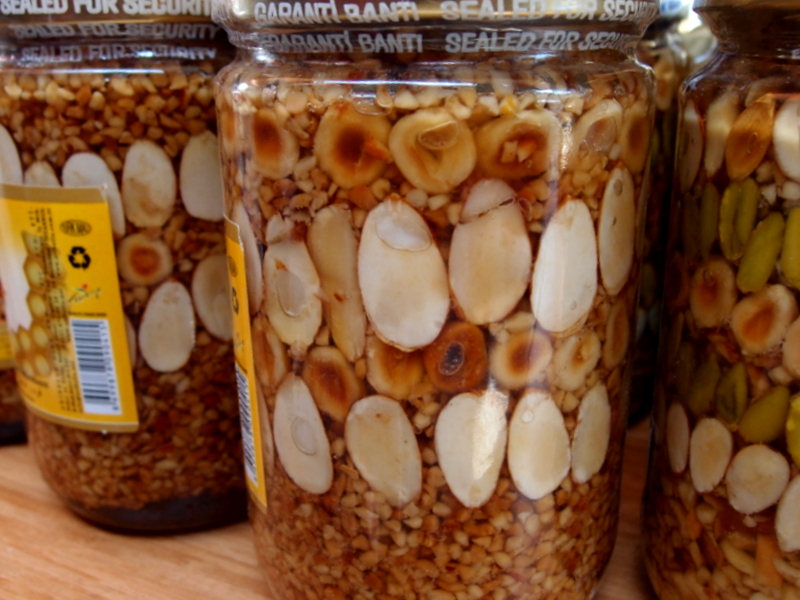
9) Ballı Çerez
As you’ve obviously noticed, the Turks love to include honey in their sweets, and ballı çerez is no different. This is a condiment made from honey, peanuts, hazelnuts, pistachios, walnuts, raisins, apricots and other spices. It’s delicious when spread on bread or plain cookies, but is also served as an appetizer.
Ballı çerez is quite sweet but has a very rich nutty after taste that doesn’t leave you with a stomachache . . . if you proceed with caution. You can purchase it in bulk jars or as just a small single-meal serving. In Turkey, it’s known to be an aphrodisiac and is marketed as such in all tourist markets.
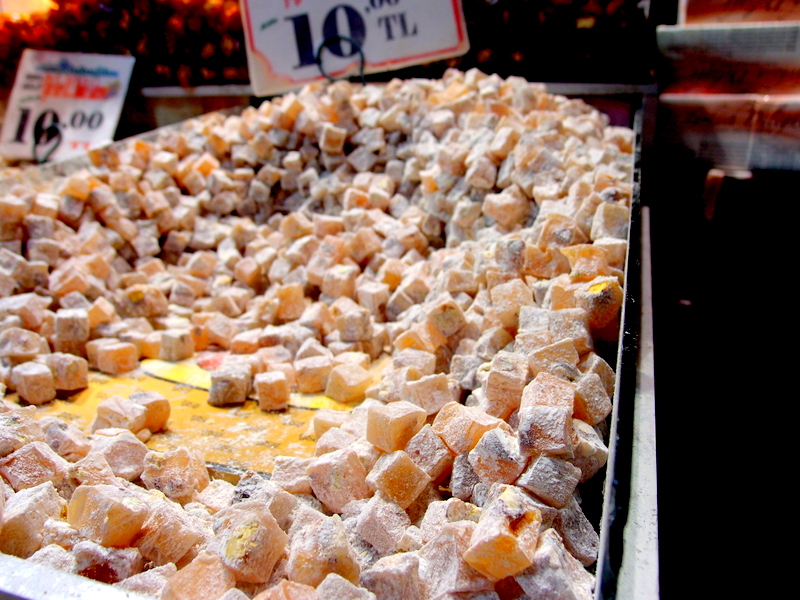
10) Lokum(Known In the West as Turkish Delight)
This is by far the most well-known sweet from Turkey, and it can be found in almost every shop. It is a very simple confection, made from a flavored jelly; nuts such as pistachios and hazelnuts are also frequently added.
The Turks typically make Lokum with rosewater, cinnamon, lemon or other fruit essences. It can either be cut into small cubes and rolled in powdered sugar or coconut or left in long chunky strips. My personal favorite is pomegranate stuffed with pistachios, another specialty of the country. When in Turkey, if you only choose to try one sweet, it absolutely must be Turkish Delight.

/
 A 24-year-old American hailing from Detroit, Michigan, Leah’s passion for travel and trying new cuisines developed after visiting Poland for a two-week holiday and quitting her job to hitchhike around Europe. The next few years were filled with adventure, cycling and rafting around Europe, living in Turkey, and finally moving to Asia. She now shares those adventures and culinary experiences on her website, Thevegetariantraveller.com. Leah has just shared her first book, The Beer Can Cookbook, on Amazon, and is currently teaching English on Jeju Island in South Korea.
A 24-year-old American hailing from Detroit, Michigan, Leah’s passion for travel and trying new cuisines developed after visiting Poland for a two-week holiday and quitting her job to hitchhike around Europe. The next few years were filled with adventure, cycling and rafting around Europe, living in Turkey, and finally moving to Asia. She now shares those adventures and culinary experiences on her website, Thevegetariantraveller.com. Leah has just shared her first book, The Beer Can Cookbook, on Amazon, and is currently teaching English on Jeju Island in South Korea.
The post 10 Must-Try Budget Desserts In Turkey appeared first on The Expeditioner Travel Site.
]]>The post Freewheelin’ in Cappadocia [Photo Essay] appeared first on The Expeditioner Travel Site.
]]>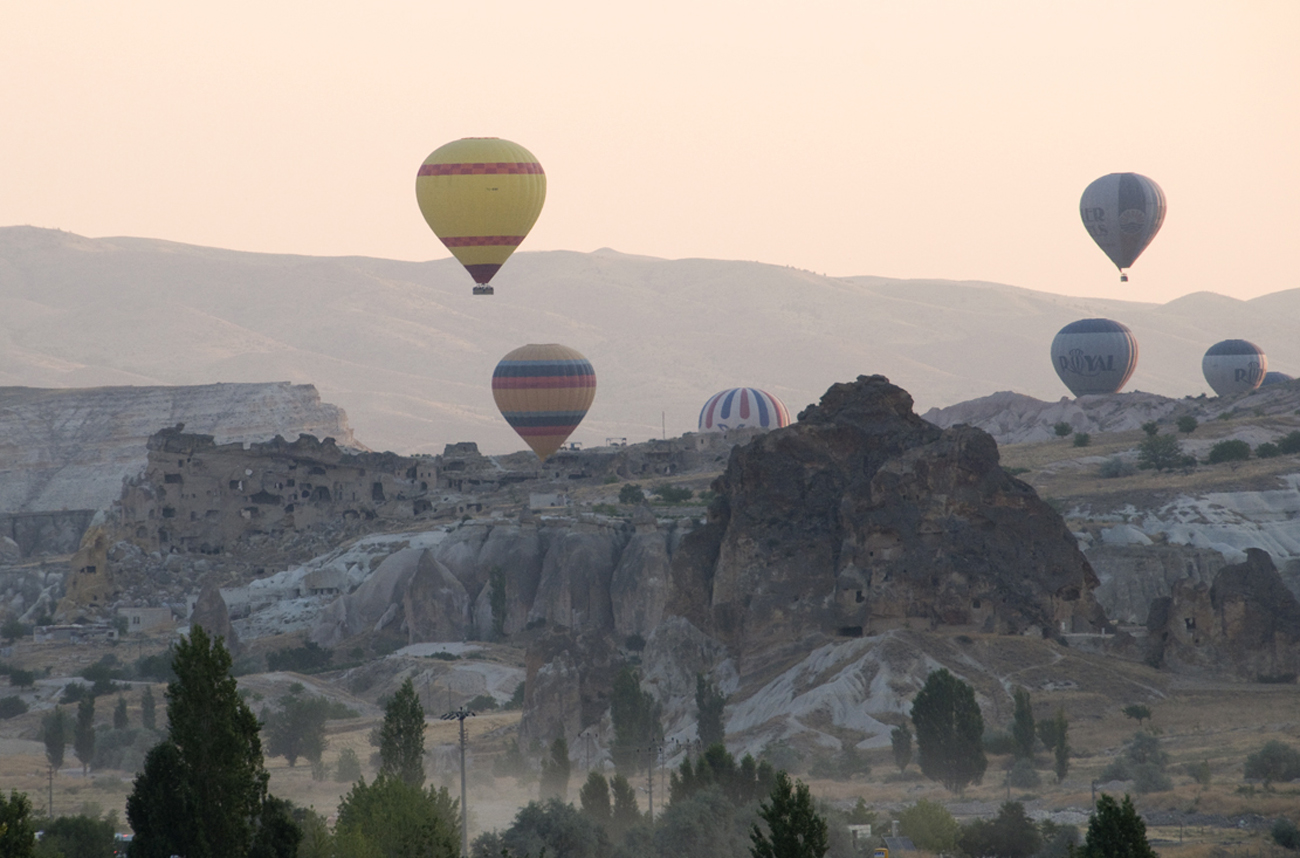
Cappadocia combines history and geology like no other place in the world. With its labyrinth of underground cities and multicolored rock formations that spiral into the sky, ancient civilizations have thrived in this arid desert landscape for more than 8,000 years.
Best known as a refuge for Christianity before it was widely accepted, Cappadocia became home to early believers as they fled Roman persecution in the 4th century A.D. Over the next 600 years, these holy settlers would create the region’s most notable landmarks, carving out their homes and churches into soft canyon walls to make so-called “fairy chimneys” while building unimaginably complex beehives of humanity.
Looking over the Cappadocia panorama, it’s easy to imagine George Lucas taking notes on the region before creating his own far, far away galaxies. Still, Cappadocia isn’t a sci-fi fantasy. It’s here, on planet earth, and it’s fairly easy to reach for anyone willing to dive into the heart of Turkey’s Anatolia region.
Tourism has boomed in the area since the 1980’s, and while there are plenty of all-inclusive bus tour packages, visitors can still rent their own wheels and create one-of-a-kind DIY adventures in this vast land of surreal antiquity.
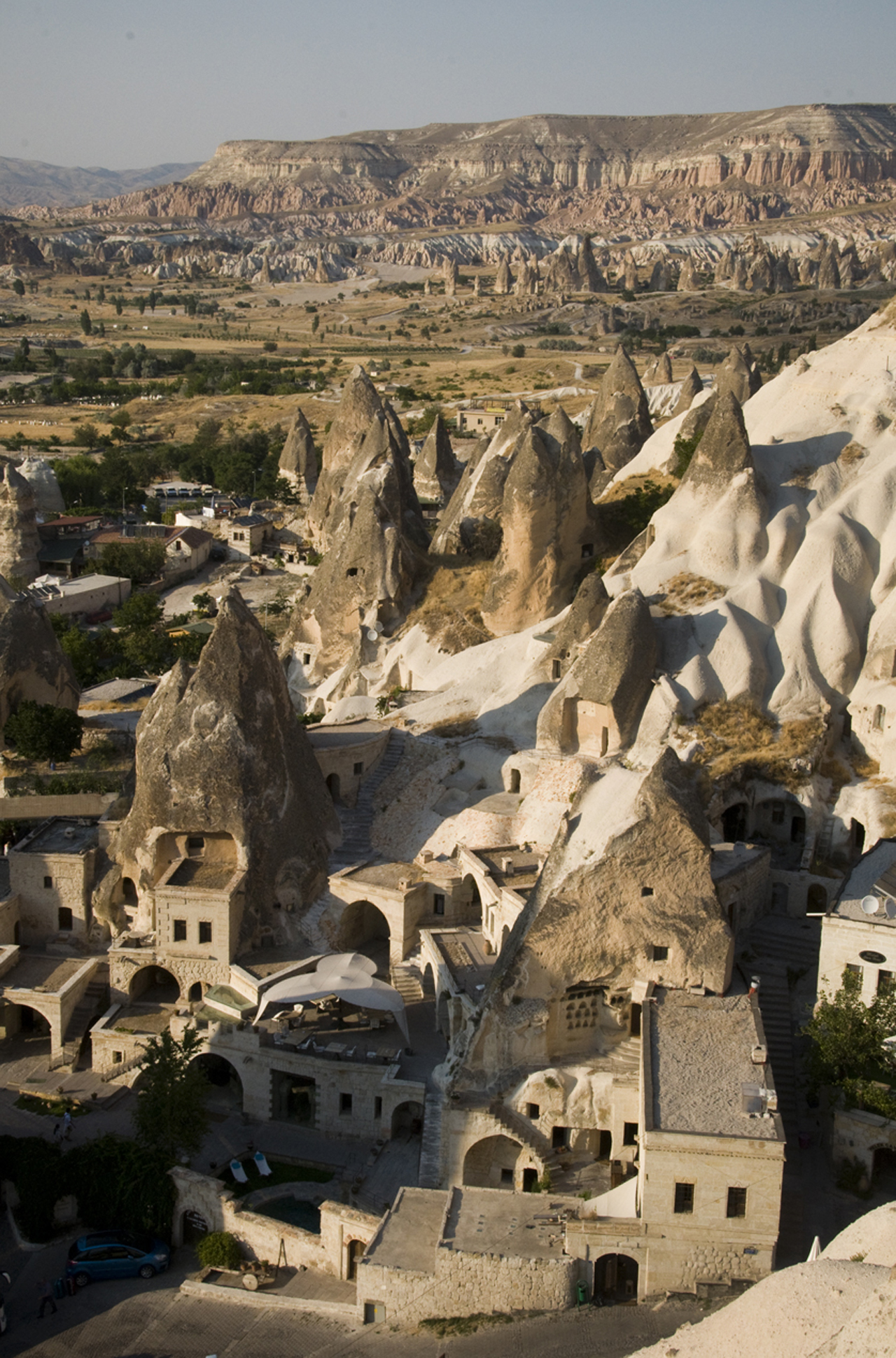
Göreme: Gateway to Cappadocia
Most Cappadocia adventures begin in Göreme, a small town wedged between massive fairy chimneys located near most of the main attractions.
A popular destination, Göreme is the easiest place to sign up for break-of-dawn hot air balloon tours, a “once-in-a-lifetime” experience that costs about 150 euros per person.
Here, visitors can also find a large selection of rentable vehicles. From dune buggies to 4×4 quads, little Vespa scooters and 1970’s Mustang convertibles. Basically, if you can imagine it, it’s probably available in Göreme.
Being long-time budget travelers, Ania and I chose mountain bikes with a more manageable fee of 15 euros for 24 hours. For reasons beyond explanation, the bikes came with a stray German Shepard that would accompany us throughout our stay. We called her Efes.
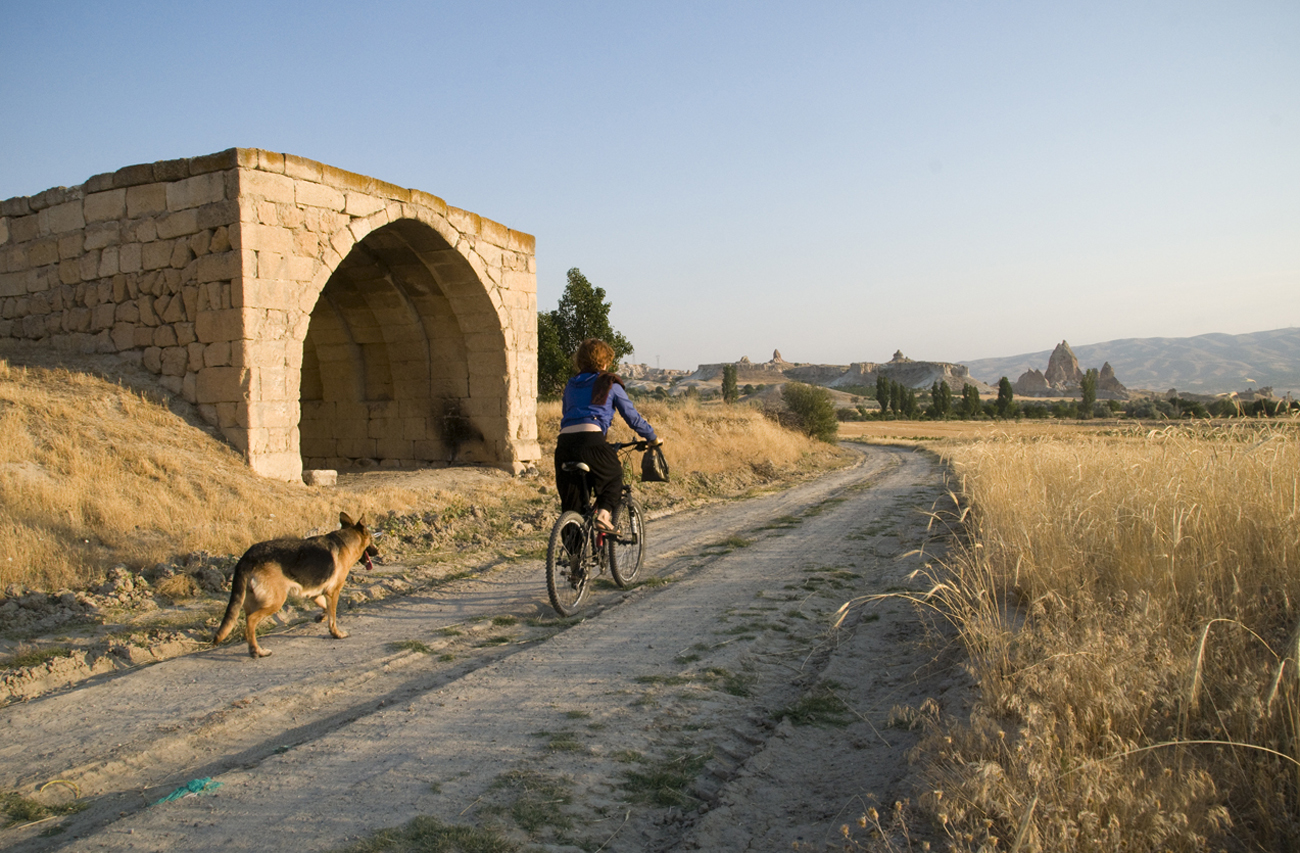
There is much to see in and around Göreme so we moved fast. Within 45 minutes of arriving, we pitched our tent at Dilek Camping, ate feta cheese sandwiches and headed out of town for our first bike ride.
Efes trailed only slightly behind as we climbed a small mountain just above Göreme to get a view of the scenery. According to one of many tourist pamphlets in my pocket at the time, Cappadocia’s landscape was formed by the erosion of lava and basalt deposits from millenniums of earthquakes and rainstorms.
The top layer of basalt was mostly volcanic ash that solidified into a soft, malleable surface, almost inviting the area’s first settlers to carve out dwellings in mountain sides and below the ground.
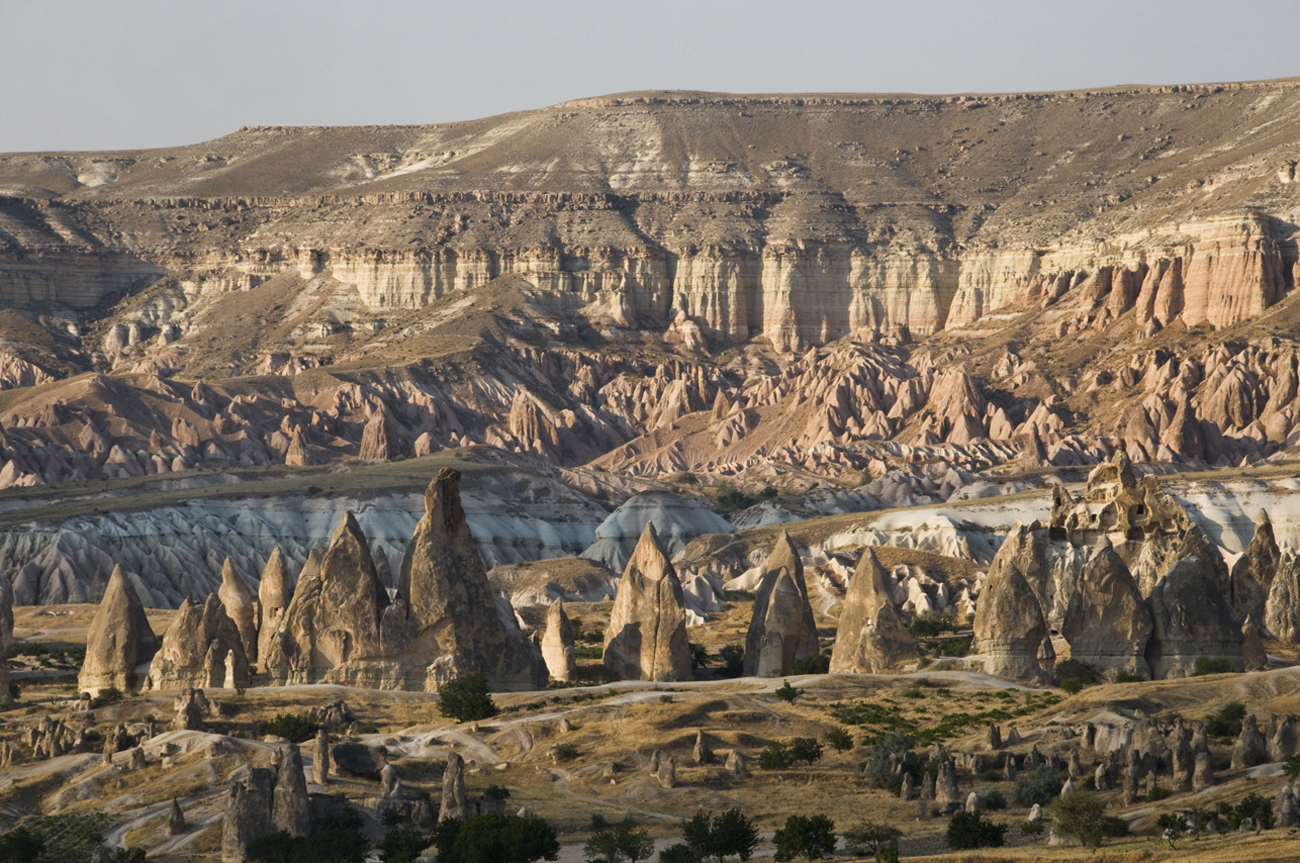
On top of the mountain, Ania and I decided to grab a bottle of wine as the sun began to set over Göreme. While talking to a man in a small grocery, we asked what Cappadocia meant.
“Cappadocia was originally called ‘Katpatukya’ which means ‘Land of Beautiful Horses,’” he explained to us before charging 5 euros for a decent bottle from a local vineyard.
Ania and I drank it on a cliff, eating fresh apricots straight off the trees while the desert plateau became as purple as our lips. We needed to be well rested for the following day.
Heaven to Hell, Çavuşin to Derinkuyu
Dawn in Göreme is a symphony of blowtorches as hundreds hot air balloons launch softly into the orange skies. Beneath these floating orbs of rainbow, Ania and I began our bicycle circuit to Çavuşin and Ürgüp. Efes, our trusty companion, slept outside the tent and followed the entire 40 miles, always trotting behind as we peddled through the Cappadocia landscape.
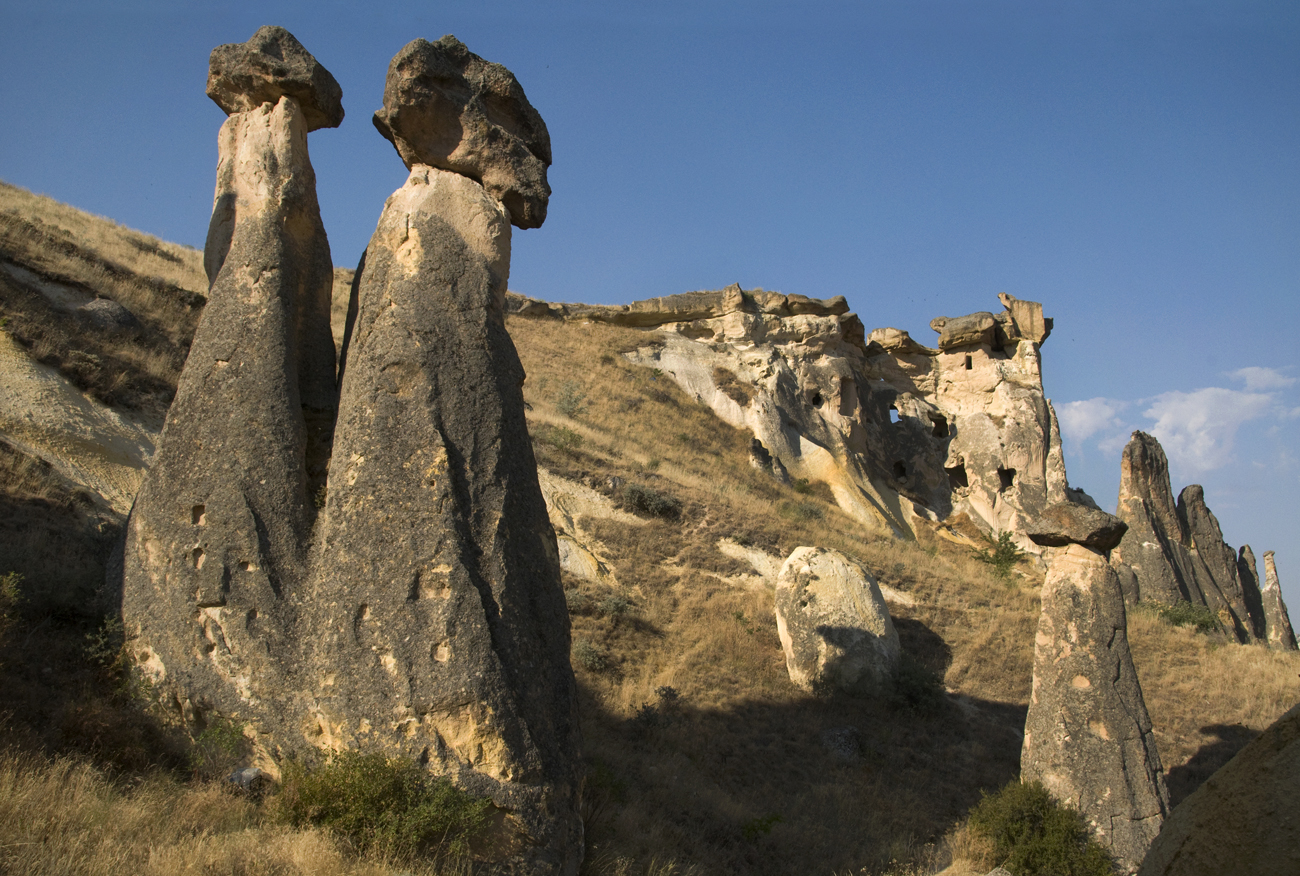
Just north of Göreme, our first stop was Çavuşin, a honeycomb city carved into a mountain ridge. We arrived before anyone else and enjoyed the site on our own, undisturbed by tour groups or souvenir vendors.
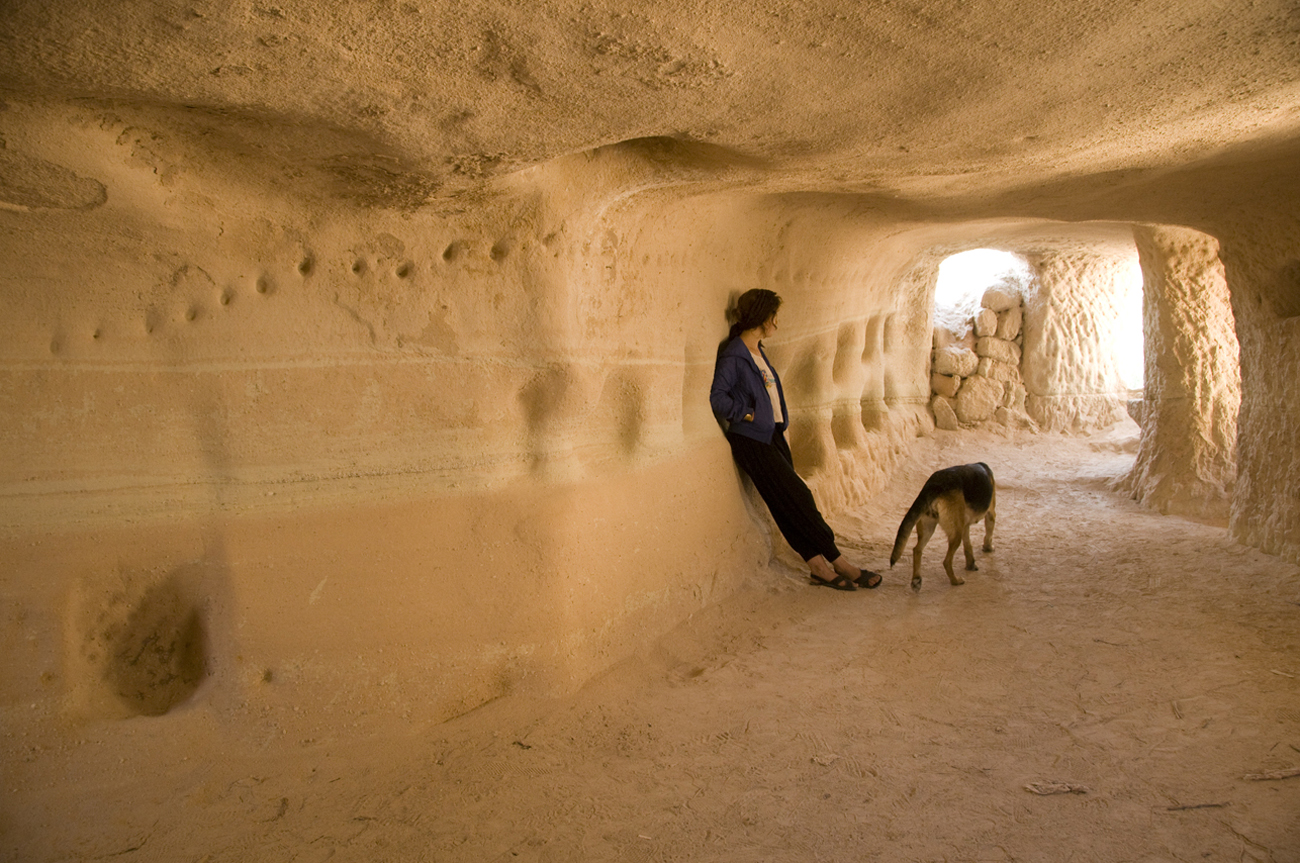
Never before had we seen archeological sites that allowed visitors to climb inside ancient dwellings at their own free will and we took full advantage, exploring each church and pigeon coop without reservations.
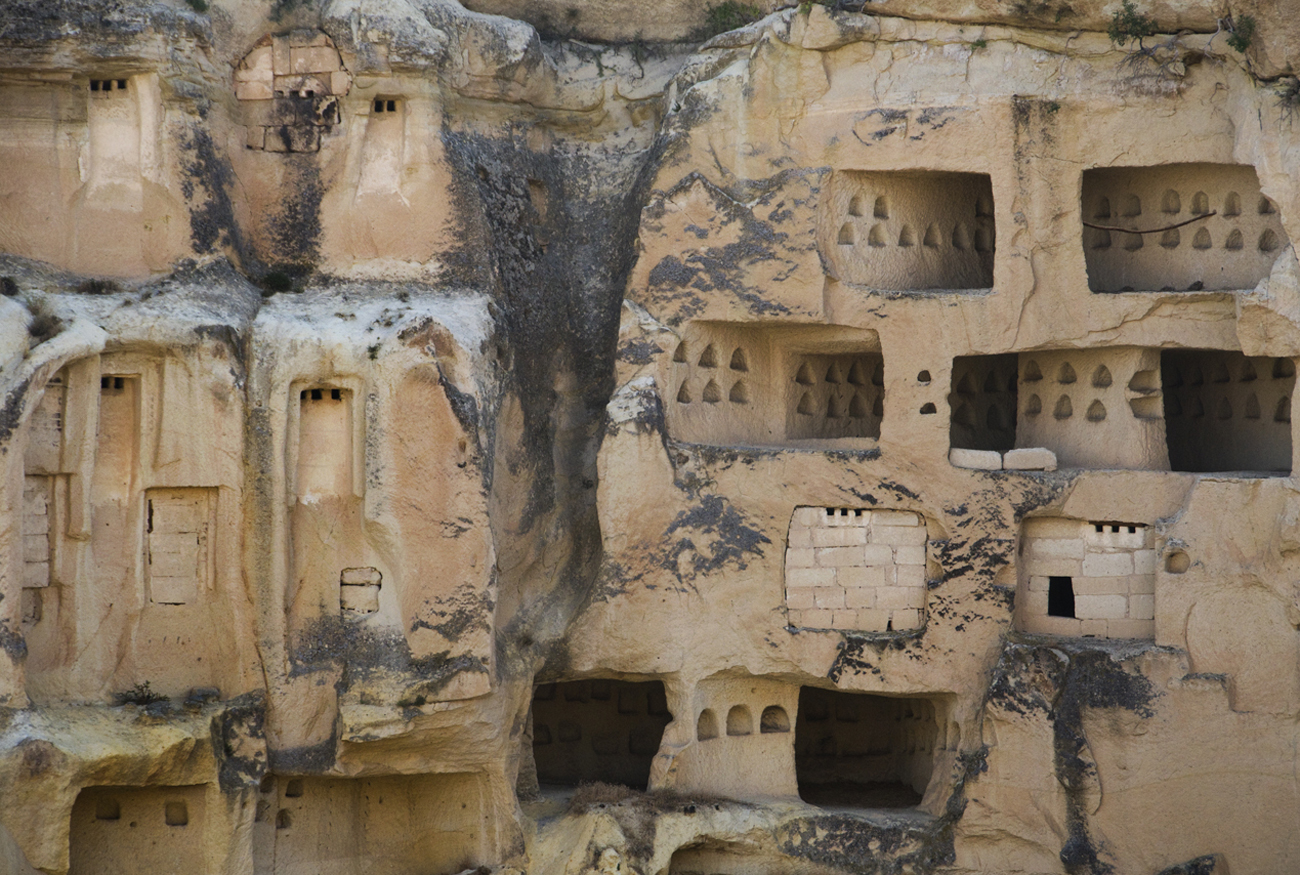
Çavuşin is best known for St. John’s Church, one of the oldest and biggest cave churches in the region, dating back to the 5th century A.D. On the city’s north face, there’s a nice trio of minarets topped with boulders and, towards the west, a small batch of secluded mountain dwellings look out onto the plateau.
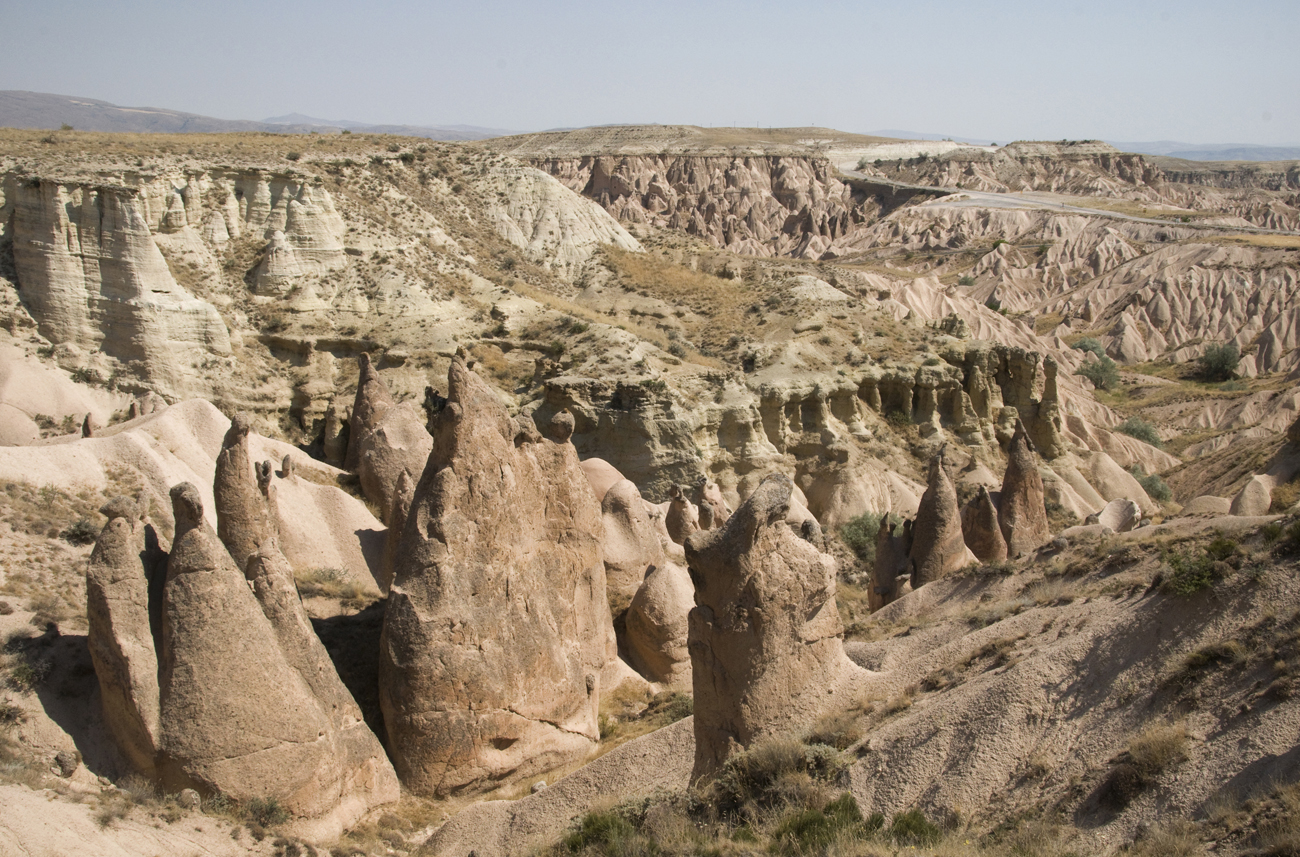
Afterwards, we passed through the Zelve and Deverent valleys, where natural rock formations play with the imagination, creating stone hands and animals that rise above the desertscape, inviting tour buses to stop every 20 minutes so travelers can snap a picture of themselves in front of a basalt camel rocks.
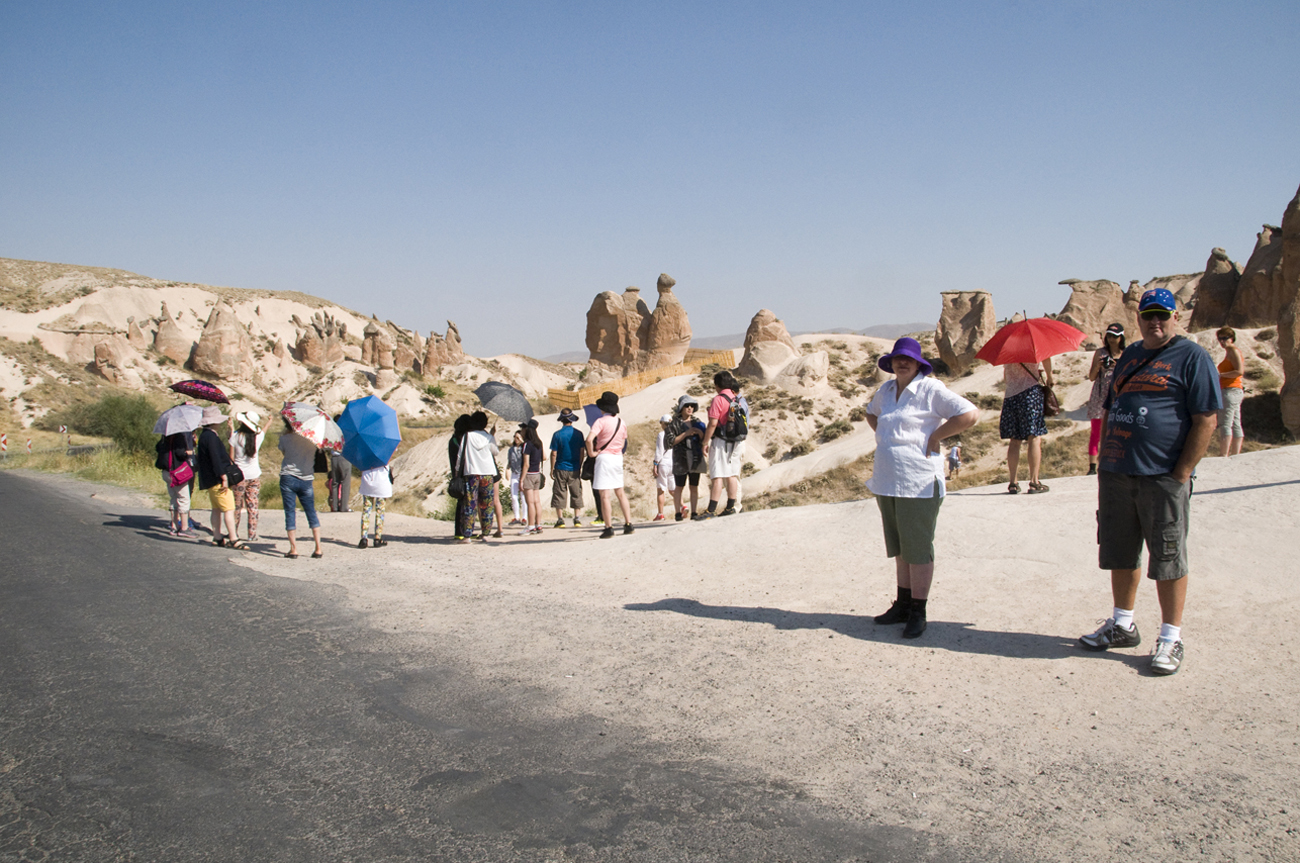
We were told there were also attractions in Ürgüp, but by this point, Efes was about half-dead from running in the afternoon heat so our main focus was finding water for the poor dog.
From Ürgüp back to Göreme, we scaled over a small mountain where the two tallest stone minarets stand near a giant Turkish flag at the summit. The area was packed with tourists and souvenir vendors so we continued towards Göreme to find, perhaps, the region’s main attraction.
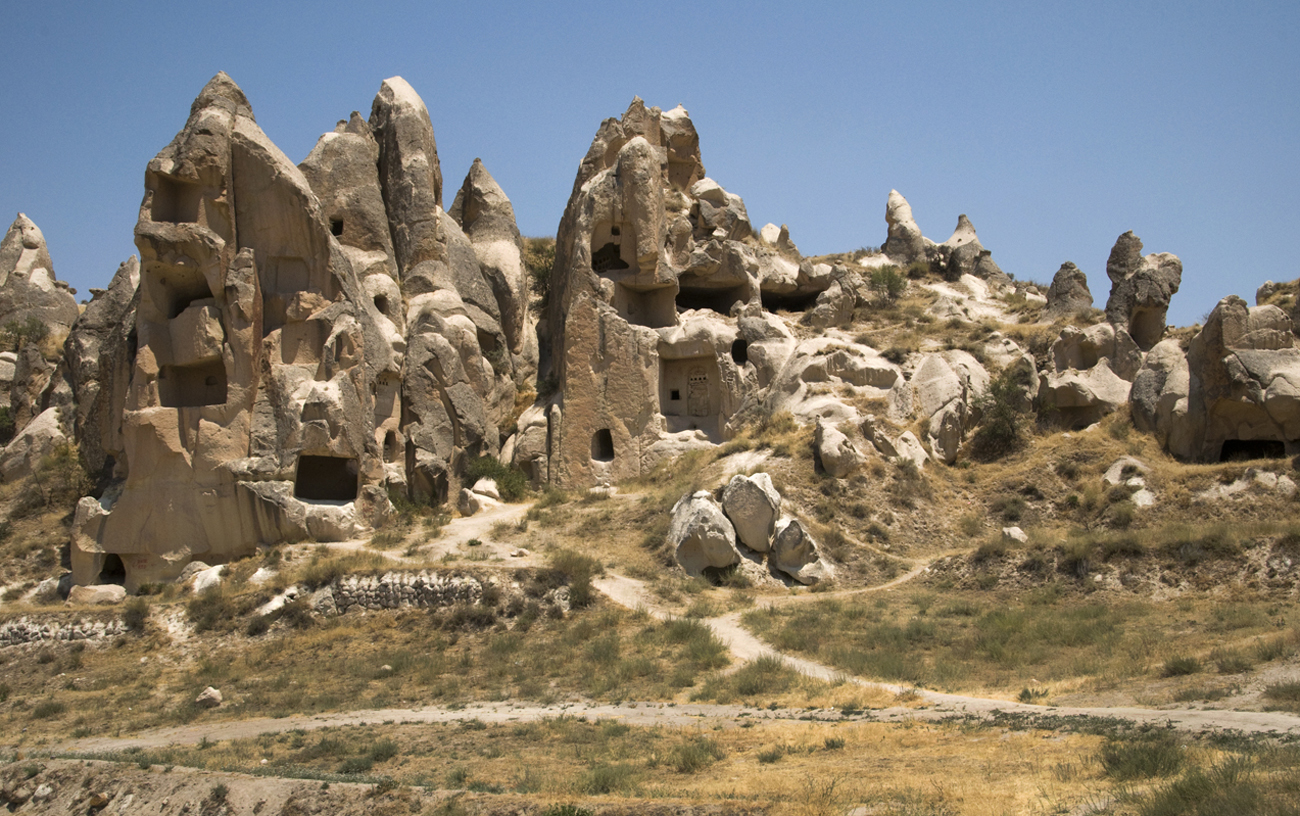
The Göreme Open Air Museum, just outside the city, is the most visited monastic community in Cappadocia. A dense complex of caves and ancient dwellings, the area contains more than 30 churches and chapels, some of which have well-preserved frescos from the Byzantine era, dating between the 9th and 11th centuries.
Unfortunately, our bike rental clock was running out and Efes needed a nap, so Ania and skipped the Göreme Open Air Museum, leaving it for next time. We had been crawling in and out of caves all day in less trampled areas and felt satisfied with our above ground explorations. The time had come to visit Cappadocia’s underground cities.
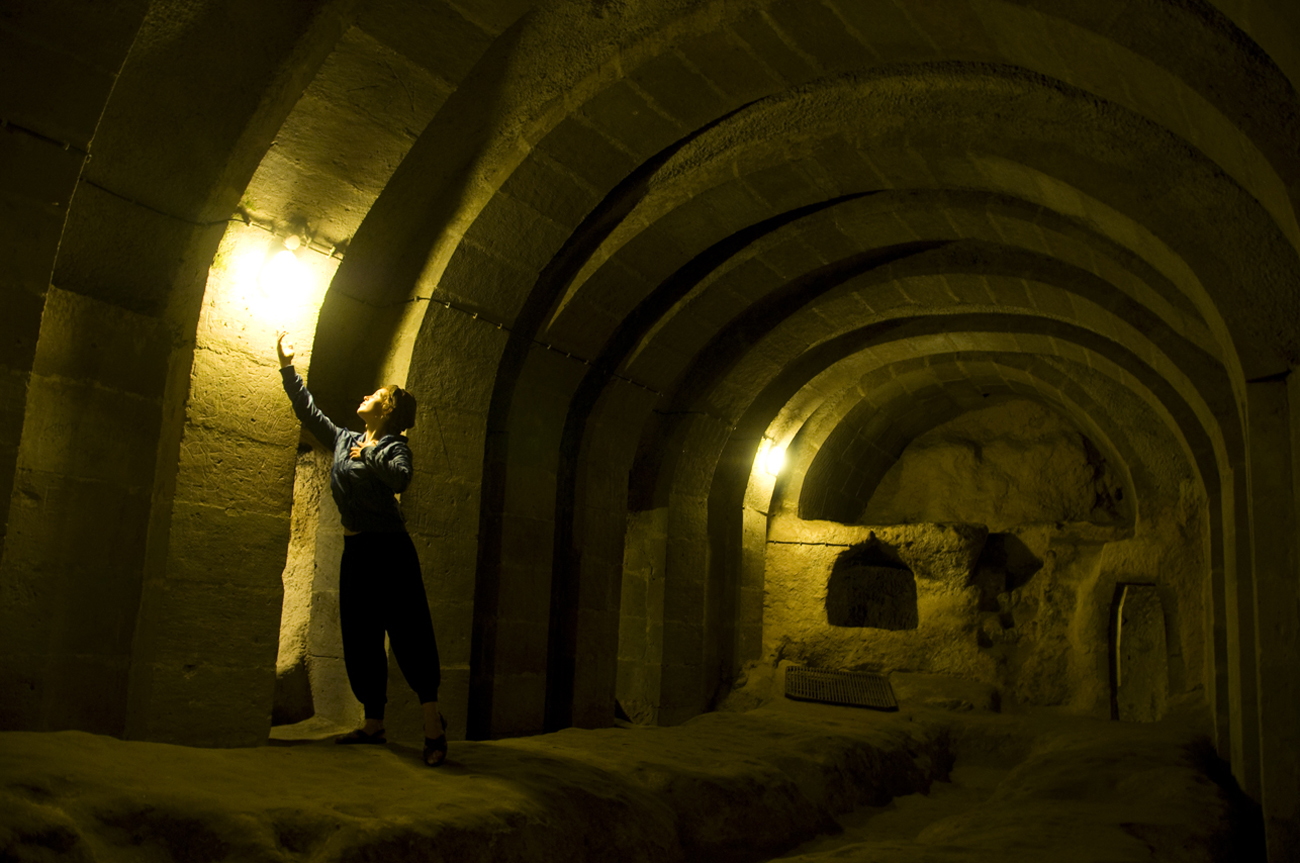
There are more than 200 underground cities in the Cappadocia region, the largest being Kaymaklı and Derinkuyu.
Derinkuyu has multiple levels and a depth of about 200 feet. Archeologists say the city was large enough to shelter 20,000 people along with their livestock and food stocks. First built by the Phrygians in the 8th-7th centuries B.C., Derinkuyu was expanded to its present form during the Byzantine era.
Following these long claustrophobic tunnels and staircases below the ground, one will find all the standard amenities of a normal city. There are stables near the entrance, storage cellars, meeting rooms, underground chapels and even subterranean wineries. After all, people cannot be deprived of pleasure in times of invasion.
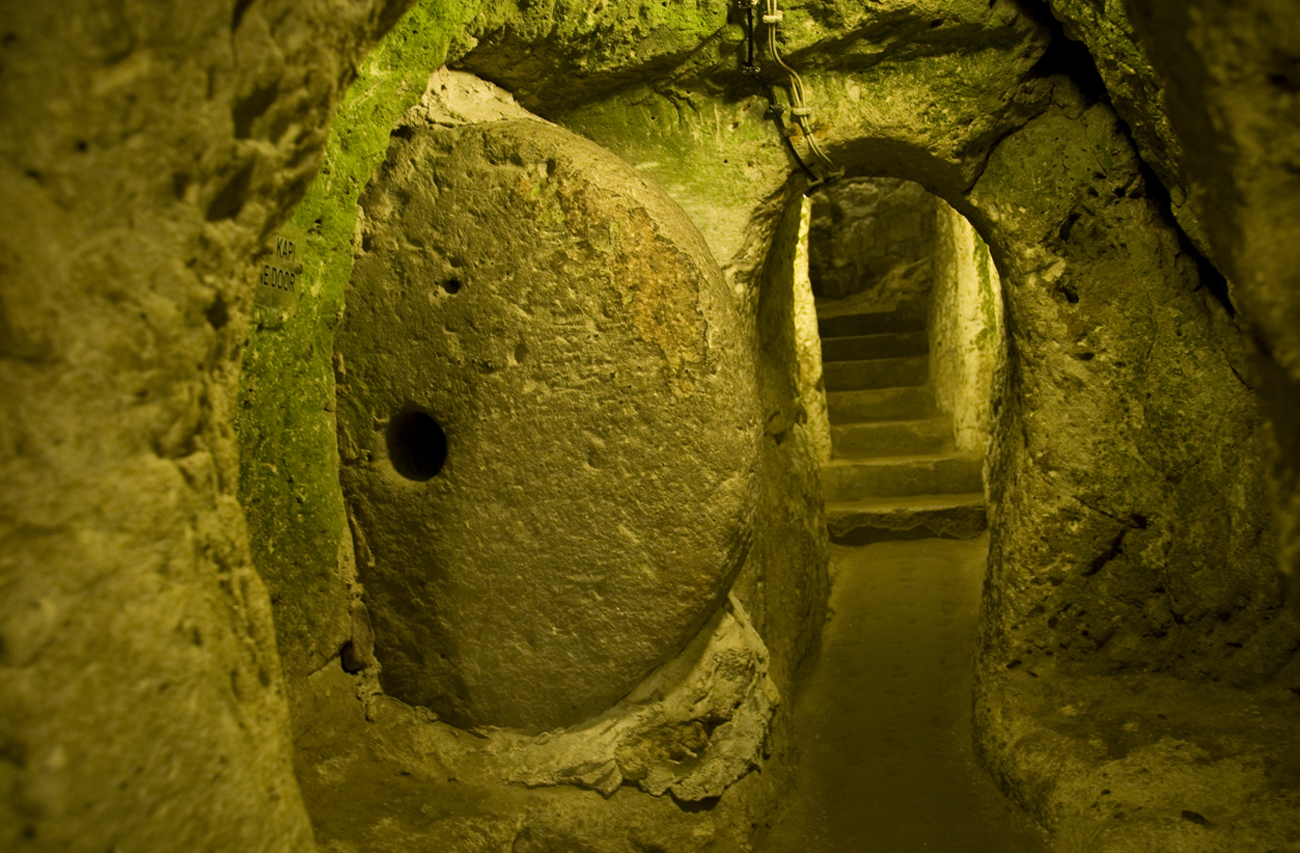
Large stone doors were designed to close off each floor in case of intrusion and miles of narrow tunnels were carved out to connect the underground cities with one another, offering residents escape routes when under heavy siege.
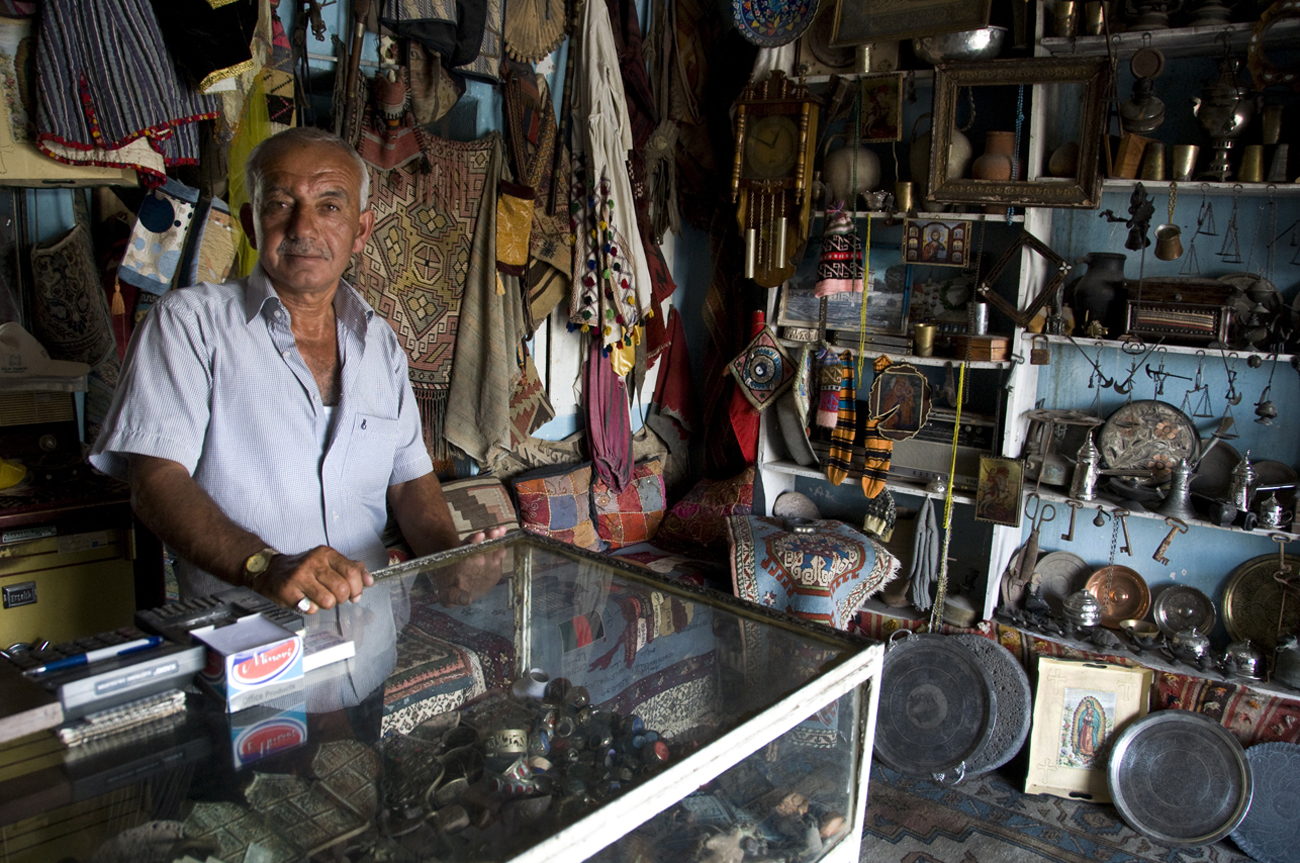
Lastly, I can’t forget to mention that above ground, Derinkuyu hosts a handful of authentic antique shop filled with rare Anatolian treasures where this fine gentleman sold Ania two sultan-sized jade rings. It was our last stop before giving Efes a can of florescent pink hot dogs and hoping on a bus to Antalya.
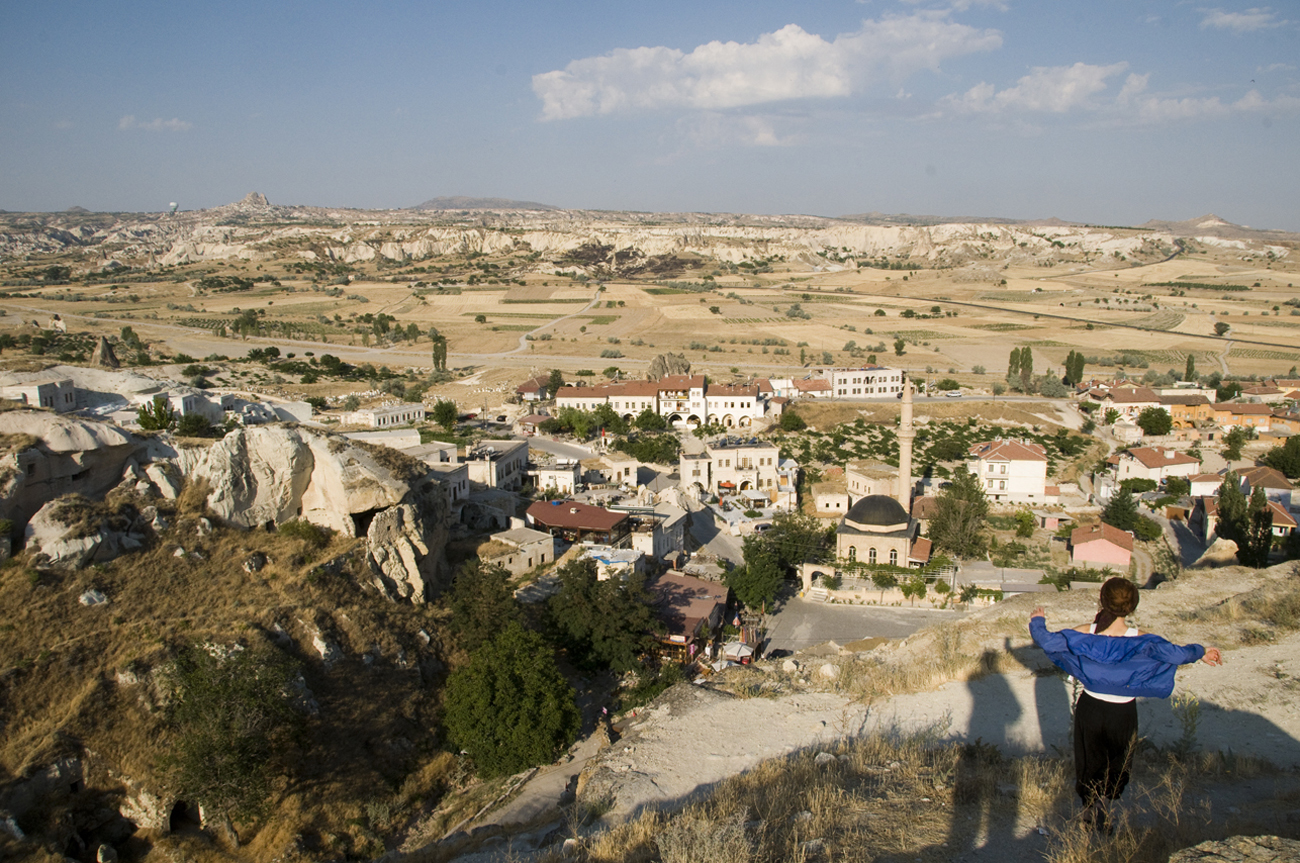
Roots of Modernity
Despite the efforts of burrowed Christians and the Byzantine empire, Cappadocia was overrun by nomadic Turkish tribes from Central Asia between the 9th and 11th centuries. Muslim Seljuks eventually conquered the Anatolia region, forcing Christians west to modern day Istanbul. The Byzantines went on to suffer heavy losses, never to regain territories that once served as incubators for the western world’s dominant religion.
Viewing Cappadocia from above, an endless parade of stone minarets and vertical beehive cities, one is faced with the origins of a society, its will to protect sacred beliefs and its ability to survive in this rose-tinted Martian landscape. Somewhere between these odd geological formations, hidden among canyons and below the ground, one can see how far humans have come and to what extent they will preserve their cultures, regardless of opposing forces. If this isn’t worth a visit to Cappadocia, then what is?
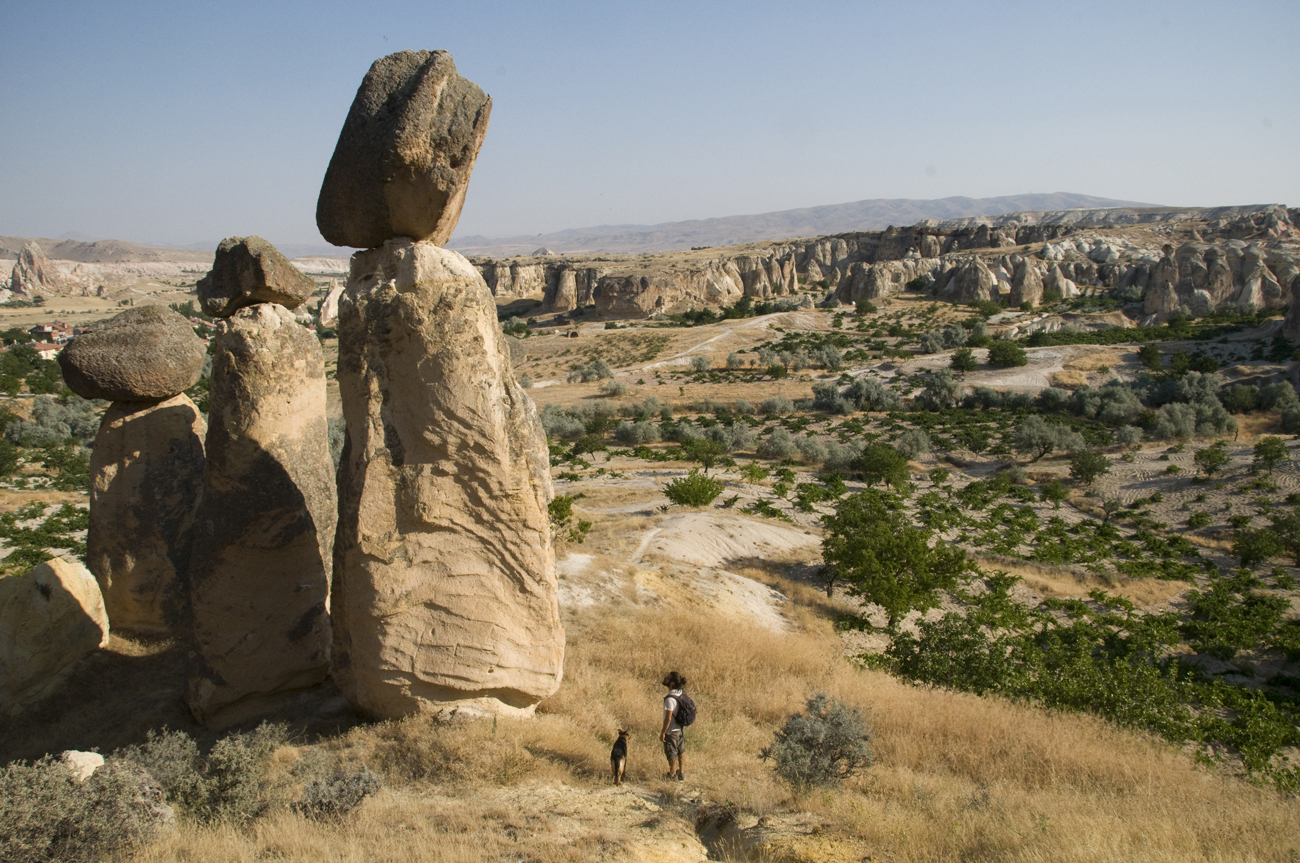
By Diego Cupolo

About the Author
 Diego Cupolo is an independent journalist, photographer and author of Seven Syrians: War Accounts From Syrian Refugees. He serves as Latin America regional editor for Global South Development Magazine and covers international affairs as a freelance journalist, having reported on Syria, Turkey, Bulgaria, Nicaragua, Peru, Argentina and Chile. His work has appeared in The New Yorker, The Atlantic, Associated Press, The Village Voice, The Australian Times, Discover Magazine, UpsideDownWorld.org and Diagonal Periódico.
Diego Cupolo is an independent journalist, photographer and author of Seven Syrians: War Accounts From Syrian Refugees. He serves as Latin America regional editor for Global South Development Magazine and covers international affairs as a freelance journalist, having reported on Syria, Turkey, Bulgaria, Nicaragua, Peru, Argentina and Chile. His work has appeared in The New Yorker, The Atlantic, Associated Press, The Village Voice, The Australian Times, Discover Magazine, UpsideDownWorld.org and Diagonal Periódico.
The post Freewheelin’ in Cappadocia [Photo Essay] appeared first on The Expeditioner Travel Site.
]]>The post Teaching English In Turkey: My Experience As An EFL Teacher appeared first on The Expeditioner Travel Site.
]]>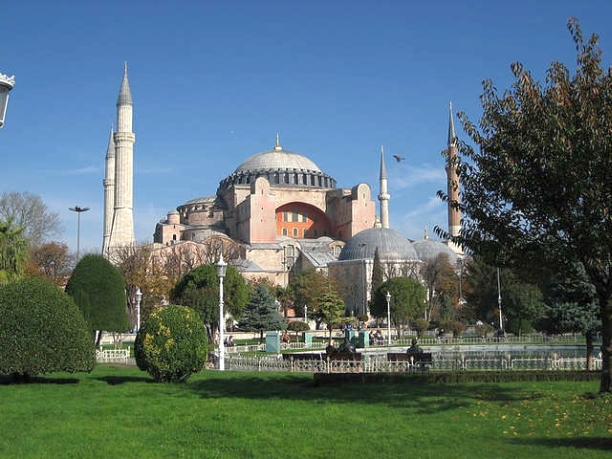
Why should you consider teaching English in Turkey? First off, Istanbul makes for a great place to begin an exploration into Middle Eastern culture. In many respects, it’s a European city, spider-work boroughs of narrow streets, public transportation around the city and wonderful arcades of well-maintained shops. In other ways — the turrets breaking up the skyline, hookah pipes and roasting hunks of meat in restaurant windows — you are most definitely not in Kansas anymore. Istanbul is one of those cities that seems to be on the cusp of everything: continents, religions, seas and cultures.
Due to its location, Istanbul has naturally adopted a comfortable mix. There are bars and cleavage, as well as the call to prayer echoing off the rooftops five times a day and women in hijabs. Market hawkers conjure up a multitude of languages to stop you for a go at the swashbuckling business of import/export negotiations. Even Istanbul’s trademark postcard filler, Aya Sophia, is a church turned mosque, which ultimately became a museum.
Istanbul is a stunning location in its own right, independent of all the converging outside influence. The city is composed of seven hills, bisected by the Bosphorus strait and bordered by sea, all creating some of the most dramatic cityscapes imaginable.
Sitting at a waterside café, staring over the straight at Topkapi Palace, the Blue Mosque, the Golden Horn, Galata Tower and beautiful bridges, it’s easy to understand why so many have stopped to pitch their tent here, and why Constantinople once was the center of the universe. As an English as a foreign language (EFL) teacher, it’s definitely one of those places that makes you ever-thankful to have been raised with a commodity everyone wants: Istanbul has millions of people who are eager to learn English.
Getting Work in Turkey
There are jobs to be found throughout Turkey, mostly in major cities like Adana, Izmir and the country capital Ankara. Undoubtedly, Istanbul, bigger than all three of these combined and with a much more international community, has the lion’s share of the EFL employment opportunities. Not only are private language schools in every neighborhood of the metropolis, but here lies the bulk of the universities, international primary and secondary schools, and a few great NGOs to check into.
In general, the best foot-in-the-door method for working in Istanbul is to go the language academy route, and there are plenty of options to choose from. The ubiquitous Berlitz language school — no surprise — has a location here, as well as home-grown EFL giant English Time, which is where I worked and has several branches throughout the city and country. There are many more employer options, including Wall Street Institute, The English Centre and Just English to name a few.
Still, like many places, the cushiest EFL jobs are university positions, which are plentiful, but more often than not, awarded only to people who are already present. The good news is that I’ve seen people just show up in Istanbul, look for a job and land a sweet university deal. Unlike working at the academies, universities tend to offer salaries rather than hourly pay, and vacation time comes a little more copiously. Good options to start with are Sehir University or Boğaziçi University.
Otherwise, a few more options remain in Turkey. Teaching children in Istanbul often pays a little more than the run-of-the-mill English classes for adults, and many of these options are in international schools like Small Hands. If money isn’t your main concern, Darüşşafaka Association is a fantastic NGO in Istanbul that works to give orphans opportunities. Furthermore, while the biggest, Istanbul isn’t the only city. Ankara and Adana get mixed reviews, but I’ve heard great things about the coastal cities of Izmir and Antalya.
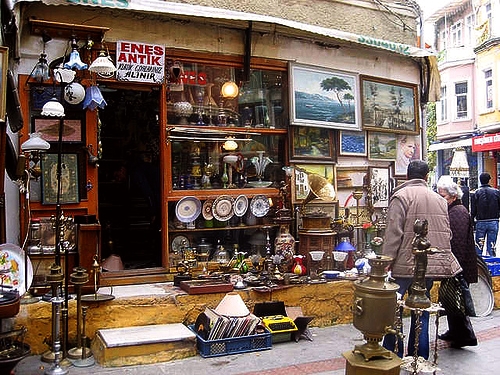
My Working Life in Istanbul
To be completely honest, my personal experience working in Istanbul had its ups and downs. At times, in the spring and fall, the pay was very appealing but the hours, split shifts seven days a week, were too overwhelming. Then, in the summer, things slowed down quite a bit, allowing my wife and I to stay afloat but sometimes forced to dip into our savings from the springtime. During the month of Ramadan, the school more or less shut down. Unfortunately, the schedule and salary fluctuated more than I’d have liked, but English Time did always pay on time and in full.
As for students, English Time caters mostly to adults, often business people who attend three-hour classes in the evening after work. There were also quite a few university students, either supplementing their curriculum classes or trying to get a leg up on standardized tests like TOEFL or IELTS. Classes were equally mixed with women and men, the decorum fairly informal and most courses were beginner or lower level, though there were a few advanced groups. Turkish pupils, even adults, often become very attached to teachers and, in general, were friendly to me.
The aforementioned schedule was the most troublesome issue I had. In the spring and fall, I worked consecutive weeks without a day off (despite a contract that suggested otherwise), and most days were split shifts, meaning I taught from 10 a.m. to 2 p.m. during the day then from 7 p.m. to 10 p.m. at night. This is a fairly common practice with EFL jobs, but it is nonetheless disappointing when you find yourself overworked, overextended and ultimately unable to enjoy the place you’ve come to experience. Upon leaving, I vowed never to work an hourly job again.
Lastly, Turkey, while less visa-intense than many East Asian countries, does require foreign employees to have appropriate work papers. English Time had just gotten into serious trouble for having illegal workers, so they were quite diligent about getting us the correct documentation in due time and pretty good about arranging the paperwork and transportation. Expect your employer to handle this, including the cost of admission, and unless fluent in Turkish, I wouldn’t advise attempting it yourself. Don’t work illegally as you may be imprisoned.
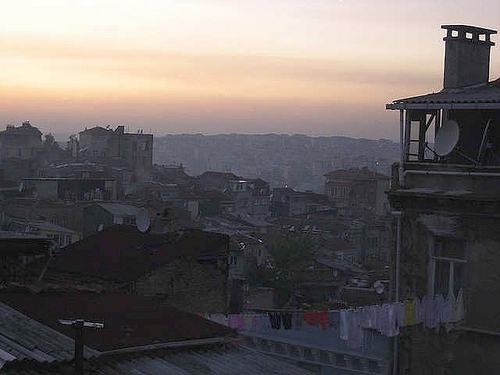
Istanbul as Home
Now, for some positive thoughts. Istanbul is far and away my favorite city I’ve ever lived in, visited or read about. It bustles. It wakes up late and slow, and at 2 a.m. certain parts of town — Taksim Square and Istiklal Street — are packed, with plenty of cafes and bars still serving. The tourist section of Sultanahmet is stuffed with so many beautiful sights — the Blue Mosque, Aya Sophia, the Grand Bazaar — that exploring it is still fun months into living in Istanbul.
When I did have a chance to play, much of my time was spent walking the city, which is for the most part very safe and has loads of great alleyways and side streets to discover. I also enjoyed taking the ferry to the Princes’ Islands, maybe an hour trip into the Marmara Sea, great for a little relief from the 20 million-plus population. Moreover, the city is just packed with places to linger over cups of tea, have a few games of omnipresent backgammon and enjoy the view. There is always something to do, or not.
Getting around Istanbul is fairly easy as there is public transport going everywhere. Unfortunately, there are five different types — ferry, subway, bus, tram, and funicular — and trips often require using two or more, each calling for a new fare. That said, the price is really reasonable and all of the services quite clean and safe. Taxis, as well, are everywhere and sometimes a little overly interested in giving you a ride. Shuttles to and from the airport(s) leave frequently from Taksim Square and don’t cost much.
Of course, it’s also really cool living in the only major city that resides in two continents. I even got to participate in a marathon that crossed the Bosphorus Strait, allowing me to run from Asia to Europe. It’s also easy enough to get to other great attractions in Turkey, such as Cappadocia, an amazing desert of conical rock formations, and Ephesus with its ancient Greek ruins. Of course, in a country surrounded by three seas, there are also famous beach resort towns like Antalya and Bodrum that offer sand and surf.
Final Thoughts
Istanbul forever remains one of my options for the next place. I’d love to live there again one day, and I recommend it to every traveler I meet. It was a great gateway, as it is often referred to, for learning a little more about religion, for traveling into the Middle East, and for easing from Western culture into something not-so-shockingly different. The food, the tea, the tobacco flavors, the eclectic shops and tremendous views that seem to be hiding around every corner — the place instantly felt like home, or at least, somewhere you wouldn’t mind calling home.

About the Author
 Jonathon Engels, formerly a patron saint of misadventure, has been stumbling his way across cultural borders since 2005 and is currently back volunteering in the mountains outside of Antigua, Guatemala. For more of his work, visit his website and blog.
Jonathon Engels, formerly a patron saint of misadventure, has been stumbling his way across cultural borders since 2005 and is currently back volunteering in the mountains outside of Antigua, Guatemala. For more of his work, visit his website and blog.
The post Teaching English In Turkey: My Experience As An EFL Teacher appeared first on The Expeditioner Travel Site.
]]>The post An Afternoon At The World’s Most Famous Turkish Bath appeared first on The Expeditioner Travel Site.
]]>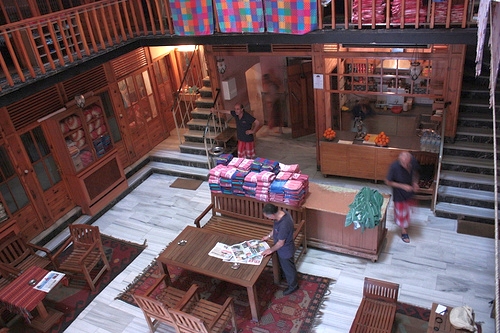
After a day walking around the Topkapi Palace or rubbing shoulders with hundreds of other visitors in Istanbul’s Grand Bazaar, what better way to relax than by having a Turkish bath? The most convenient place for travelers, and also the most famous, is the Cemberlitas Baths, the entrance to which is just outside the Cemberlitas tram stop.
I had plenty of time to read about the various options they offer (In English) at the entrance as the three Italian ladies in front of me all wanted the “Luxury” option, costing 90 Turkish Lira (USD$50), and paid individually by credit card. I decided upon the “Traditional” option, costing 55 Lira, and paid in cash, receiving in return a folded scrubbing mitt enclosed in plastic and a towel called a pestemal that would cover my middle third. I was directed straight ahead whereas the ladies have a separate entrance to their changing rooms, steam room and showers.
I crossed the entrance hall or camekan and headed up the stairs. I was greeted by the changing room attendant, Omar, who was the only person I met in the baths who didn’t solicit for a tip. I was on the lower of two levels of individual changing rooms called halvets that were locked with a key, which had a loop attached that fitted snugly and securely over my wrist. Having changed into my towel and some loose-fitting wooden sandals, I felt very pale all of a sudden. Omar indicated I should go back down the stairs where I was directed through one door into the shower and warming down area. Here people were sitting around having shoulder massages, drying themselves and sitting still with their eyes closed.
The door to the steam room opened and I clip-clopped through the slight haziness into the huge domed room. An attendant pointed to where I should lie down on the circular central slab that was 30 feet in diameter. This is called a gokektasi and is directly above the heating source. There were around 20 customers and 5 attendants. I laid down on the slab and started to stare at the ceiling and tried not to feel too hot as I gradually melted into the marble.
This steam room was built in 1584 and like the rest of the Cemberlitas Baths was designed by the great architect Sinan, who designed many of the mosques in Istanbul. Fountains around the edge contain water to help people cool down if they feel they can’t cope with the temperature. All around I heard people being washed, massaged, slapped a little, scrubbed and sloshed with water.
I lay on the vast hot marble slab and sweated profusely for 15 minutes, occasionally dowsing myself in cool water from a metal bowl filled from the fountains. I held the mitt I was given at the entrance all the time as this would be used by the attendant to clean me. There are holes in concentric circles in the ceiling to let the light in and I became almost mesmerized by trying to count them all. I think there are 132 in eight circles but I might be wrong. Then all of a sudden it was my turn to be bathed.
“Sit,” came the command, and I obediently sat on the edge of the slab, but my mind was still on the holes in the ceiling, and I was still looking upwards, so the bucket of colder water that drenched me came as quite a shock.
“Oooer,” I think I said.
“Good?” said the smiling attendant.
“Yes, refreshing,” I said, “what is your name?”
He looked at me and pointed to himself. “I am Turkish Maradona.”
“Really, which team do you support?”
“Besiktas, of course.” He looked horrified as though he would support any other team. “Where you from?”
I told him I was from England though I lived in Canada.
“Manchester United no good, Arsenal no good, Chelsea no good, Liverpool good, Steven Gerrard very good — who you support?”
“Liverpool.”
The Turkish Maradona nodded his head in approval and then indicated that I should lie down flat on the edge of the slab. I gave him the mitt and he pointed to the metal bowl and mimed putting it under my head.
Then the self-styled Turkish Maradona got to work. He cleaned me with the mitt both on my back and on my front. This was done quite gently moving in vertical sweeps along my torso and my legs up to my thighs. He then went to get a large metal bucket and used some of the contents to cover me in soapy water and he massaged me really well back and front, firmly extracting all the dirt that has built up over the day with his fingertips.
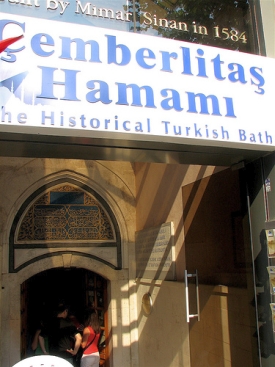 By the end of this I was sliding around on the marble as though I was on ice. When I was on my front, he made me stretch my arms above my head and he flattened them slightly against the stone and pulled my wrists upwards which really felt very invigorating. He also massaged my back quite hard running his hands upwards from my waist towards my neck three or four times.
By the end of this I was sliding around on the marble as though I was on ice. When I was on my front, he made me stretch my arms above my head and he flattened them slightly against the stone and pulled my wrists upwards which really felt very invigorating. He also massaged my back quite hard running his hands upwards from my waist towards my neck three or four times.
Maradona then got me to sit by the water fountain for 5 minutes to sweat a little more. He cleaned the area where I had just been lying with two buckets of water before walking around the slab and chatting with some more attendants. He was soon back. He grabbed my head quite firmly and began to wash my hair with the mitt. He had the flat of his hand pressed against my forehead and washed my head with the other hand. Some soap got up my nose so he threw a bucket of water over my face. With both hands he then rubbed my head vigourously with more soap and massaged my upper back, neck, and shoulders. I was rinsed twice and soaped again before he finally emptied three buckets of cooler water over me in quick succession. They were so invigorating.
Then the fun really began. He made me lie face down near the fountain and massaged the back of my legs incredibly firmly as though he was trying to make impressions of my calves and knees in the marble. He did this with his forearms and it almost hurt. I didn’t think my knees could feel squashed but they did although the feeling soon returned. Maradona then flattened my feet against the marble — which made me laugh as it seemed to stretch my muscles and they felt so loose afterwards. Once again he stretched my arms above my head and massaged the tension out of them and then did the same with my legs. I felt like a salmon on a slab at the fishmongers; I had no strength left, but I also seemed strangely relaxed.
Disappointingly, he indicated that was all there was.
“Don’t forget to give me tip after shower,” he said.
“After changing upstairs,” I said, not feeling that his approach was necessary.
“Do not give tip to changing room man, give me, now you have shower.”
I went through the steam room door and turned right. There were three showers, plus some urinals and four toilets. The hot shower water felt so cooling and I let it play over me for five minutes. Afterwards, I discarded the towel I had been wearing, which felt like an old friend by that time, and I was then given three new towels by another attendant. He wrapped the first around my legs quite tightly, covered my torso with the second, and gave me a fetching headdress with the third, so that I looked like a very colourful version of Peter O’Toole in Lawrence of Arabia.
Before getting changed, I sat down for about five minutes and thought about the whole wonderful experience. Walking in the towel was quite difficult — I felt as though I had tight-fitting skirt on — so I went slowly up the stairs one at a time. I opened the door to my room, dried myself, and got dressed. I gave a tip to Omar who seemed genuinely surprised and shook my hand profusely. I then went downstairs to find Maradona who was pleased with a 5-Lira tip.
Cemberlitas is probably the best place to go if you’ve never had a Turkish Bath before. The staff are used to newcomers, everything is very straightforward to find and the steam room is not unbearably hot.
I felt a spring in my step as I bounded up the steps out into the evening warmth and headed for a herbal tea in a local café. I felt incredibly clean, all my limbs seemed very supple and my back and lower legs felt loose and were none the worse for wear after my encounter with the Turkish Maradona.
By Julian Worker

About the Author
 Julian’s writing has been featured in The Globe and Mail, Fate Magazine, Vancouver Sun, Northwest Travel and GoNomad.com. Julian’s photographs have appeared in travel guides by National Geographic, Thomas Cook and Rough Guides.
Julian’s writing has been featured in The Globe and Mail, Fate Magazine, Vancouver Sun, Northwest Travel and GoNomad.com. Julian’s photographs have appeared in travel guides by National Geographic, Thomas Cook and Rough Guides.
The post An Afternoon At The World’s Most Famous Turkish Bath appeared first on The Expeditioner Travel Site.
]]>The post Goodbye Visa Run: Turkey Begins Cracking Down On Tourist Visas appeared first on The Expeditioner Travel Site.
]]>
Until January 31, 2012, rules regarding tourist visas for Turkey were, to say the least, blurry.
How things used to be
It was common practice for people entering the country on a 90-day holiday visa to simply pop over the border when their designated time had expired, renewing their 90-day allowance with a cheeky one-night cheap-vodka booze-up in a border-town before being back in Istanbul in time for breakfast. You could then continue their stay in the country unhindered and completely legally.
In such gloriously lax times, ex-pats had been able to stay in Turkey for extended periods, without having to apply for residency and pay residency charges.
How things are now
Sadly, for foreigners taking advantage of this level of flexibility, the situation has changed. As of the beginning of February, the government has been cracking down, enforcing the rule that once you enter the country, you can stay for a maximum of 90 days over a period of 180 days. Once this allowance has been used up, you will have to leave Turkey for the subsequent 6 months before coming back in — or face the consequences.
The change in regulations is causing significant problems for people who have been effectively living in the country on tourist visas. Nevertheless, the application for the 1-5 year residency permit is not complicated and can be completed from within Turkey, if you are operating within your 90-day allowance, or from your home country.
Nationals from 44 countries are being affected by new rules so refer to your country’s Foreign Office website to confirm how the changes apply to you. It is worth checking as, if you breach the terms of your visa, you can be given a large fine, deportation and a possible ban on reentry [stern look].
Things we aren’t sure about yet
A grey area remains around whether people who left the country to renew their visa and came back in before February 1 will also be penalized for breaching their 90 days. Will the new regulations can be enforced retroactively? For example, if you did a traditional border run before this date, will you be covered by a new 90-day allowance or be punished for breaching the terms of your visa as the law exists now?
Consider me the guinea pig on this one as I did an overnight flight to Bulgaria to get my passport stamped just before the rules changed. I may or may not be an illegal immigrant at this point.
Do Turkish jails have wi-fi? Not according to Billy Hayes . . .
I’ll keep you posted.

About the Author
 A restless Brit with big dreams and limited cash flow, Hannah is an English graduate and former Publicist who has spent the past 18 months living and working in Central America. You can follow her wanderings at TheTangerineRidiculousness.com.
A restless Brit with big dreams and limited cash flow, Hannah is an English graduate and former Publicist who has spent the past 18 months living and working in Central America. You can follow her wanderings at TheTangerineRidiculousness.com.
The post Goodbye Visa Run: Turkey Begins Cracking Down On Tourist Visas appeared first on The Expeditioner Travel Site.
]]>The post Turkish Baths: What You Need To Know For Navigatıng Your First Hammam Experience appeared first on The Expeditioner Travel Site.
]]>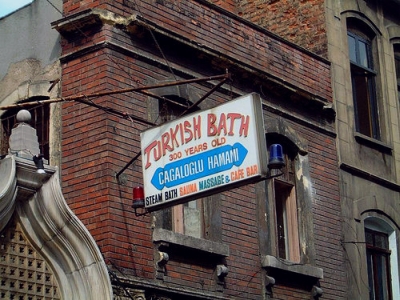
Entering the chamber your eyes gradually acclimate to steamy haze to you see you are not alone. By the shafts of light floating down from a domed ceiling high above, the naked bodies occupying every marbled surface slowly become visible; the air thick and sweet with the smell of perfumed bubbles and the sound of exposed skin being lathered slaps and slips.
Tiptoeing shyly further into the space, you clutch the traditional cotton cloth peştamal to your chest like a startled vole when, emerging from the fog, a bare-breasted masseur looms into view. She unceremoniously plucks your towel — that last vestige of modesty — from your now uncovered frame.
You are one with the sea of flesh.
Leading you to a huge hot stone in the center of the chamber — where many other of the nakies are already luxuriating — she gestures for you to lie down. Being rather unsure of exactly what is coming next, it is difficult to relax. “Okay,” you tell yourself, “shut your eyes. Breathe. Enjoy the calming environment of . . .” Hot water hits you in the face as you are doused with a bucket wielded by the silent but stately purveyor of the suds.
Do not fight it. For the foreseeable future, you belong to them. Relinquish yourself to large nude people and let the cleansing commence.
It is not hard to understand why the words “Turkish bath” can have an alarming effect on people, as without knowing what to expect, the prospect of being hosed down by a stranger can be disconcerting. But, dear first-time Hamam-goers, when in Turkey, do as the Turks do and, with a little help from the answers to some FAQ’s, we shall prepare you for your great bathing debut.
Will I be completely naked?
Unlikely. If you are female, in most cases you will be provided with a pair of underwear to cover your nether-regions. If you are male, you will wear your peştamal around your waist throughout.
Is it embarrassing walking around naked?
This depends on you, but there is really no need to be. You know you are going to have to take your clothes off so embrace it. Every shape and size is accounted for inside a Turkish bath. And I do mean every. Big or small, pointy or curvy or concave, just let it everything be free and strut it out.
What should I bring with me?
To be on the safe side, bring everything you would as if you were going to a swimming pool, but in most cases, and certainly in the commercial baths, you actually won’t need anything at all as they will provide everything from towels to soap to hairdryers to tea.
How do I know what treatment to have?
Most Hamams will offer you the choice between “self service,” where you wash yourself, and a traditional cleanse. Go for the latter.
As to the bathing itself, you can then pay a bit more for certain “Extras” — and this isn’t code for a quickie in the Jacuzzi, we simply aren’t that sort of a website I’m afraid. [Editor’s Note: We Aren’t?] Possibilities for additional services usually comprise facials, special oil massages and pedicures, for which you will pay an additional fee settled beforehand.
Will the masseur also be naked?
Yes, they will be as naked as you are. The probability for unintentional skin-on-skin action is therefore extremely high. Depending on your constitution, having somebody else’s mammary/reproductive glands flapping about on your back as they wash you can induce feelings of panic, but don’t think about it too much.
Will the masseur be male or female?
You will rarely encounter mixed sex Turkish baths. In the majority of cases the areas for men and women are kept separate or the days for men and women are alternated.
How do I know which Hamam to visit?
Turkish baths can have the reputation for being unhygienic and seedy, or less sensitive towards foreigners. Those located inside hotels will almost certainly be clean and geared towards the less experienced bather, but the drawback is the experience will probably not be quite as “authentic” as a back-alley equivalent, and it will definitely cost you a pretty penny.
Çembarlitaş Hamamı close to Sultahanamet is an excellent compromise. It’s one of the oldest hammams in Istanbul and is consistently rated for being one of the most pristine and user-friendly. Expect to pay about 69 Turkish lira (USD$39) for a traditional wash.
If you have any Turkish-speaking friends who use the local version of Groupon, ask them to check online for the latest deals. Unfortunately it is not available in English.
Should I tip my masseur?
If you feel like they did a good job, then absolutely, but it is not compulsory and many people don’t. Find them in the communal area afterwards as you will be devoid of a purse or pockets during the bath itself.
Does it hurt?
The terms “pummel” and “scrub” are very useful in surmising what to expect from a Turkish bath. But while it probably won’t be quite as sedate as having a cup of tea with your granny, it should not be a painful experience. Bracing certainly, but not un-enjoyably so.

About the Author
 A restless Brit with big dreams and limited cash flow, Hannah is an English graduate and former Publicist who has spent the past 18 months living and working in Central America. You can follow her wanderings at TheTangerineRidiculousness.com.
A restless Brit with big dreams and limited cash flow, Hannah is an English graduate and former Publicist who has spent the past 18 months living and working in Central America. You can follow her wanderings at TheTangerineRidiculousness.com.
The post Turkish Baths: What You Need To Know For Navigatıng Your First Hammam Experience appeared first on The Expeditioner Travel Site.
]]>The post Top 5 Countries For Teaching English Abroad (That Aren’t in Asia) appeared first on The Expeditioner Travel Site.
]]>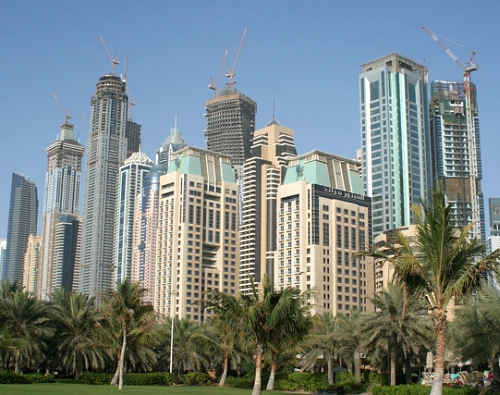
When it comes to jobs teaching English abroad, South Korea and Taiwan are the headliners. Teaching English jobs are easy to find, and high salaries and free housing are some great incentives to head east, but it’s not enough to lure everyone. There are a lot of motives behind your move: curiosity about a certain culture, the chance to learn a new language and the opportunity to experience the local community as an insider.
Asia won’t cut it for everyone. Whether you have your heart set on living in a Spanish-speaking town, or want to immerse in an Arabic community, here are five popular countries for teaching English abroad.
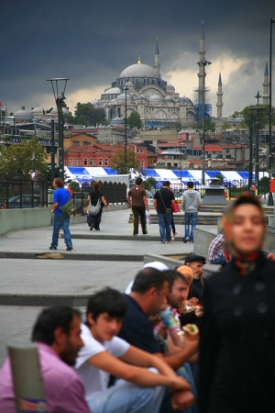 1) Turkey
1) Turkey
This Muslim nation is literally the meeting of two worlds. Stand on the west side of Istanbul’s Bosphorus bridge and you’re in the “old city” of Middle East streets and squares. Cross the river and you’re on the European continent. Istanbul, which is Turkey’s largest city but not its capital, is a sprawling collage of street markets, mosques and modern boulevards.
While the country is still developing, especially in its rural areas, Istanbul is as metropolitan as Brussels or Rome. Ankara, the country’s capital and second-largest city, has many English language academies and big chain schools, such as Wall Street Institute, which are also found in Istanbul. Other cities like Adana and Izmir and are other popular places to finding teaching jobs. The bottom line is to make sure to have a TEFL/CELTA certificate, as most teaching jobs in Turkey require one along with bachelor’s degree. (For more information check out teaching jobs in Turkey via GoOverseas.com)
2) Russia
There are a lot of opportunities to teach in Russia, and the opportunity to learn the language can be one of the most rewarding experiences. Russian can be challenging, but it’s one of world’s most influential languages, from classic literature to current world politics.
Due to Russia’s strong role on the world stage, there is a strong desire to learn English here. Adults and children (for the most part) take extra efforts to learn the language, and there are a lot of private language schools offering classes as a supplement to their education. If you’re new to Russia or teaching abroad, it might be a good idea to work with one of the big chain schools, which sometimes offer housing assistance or teacher training.
Venture outside the large cities of Moscow and St. Petersburg, and you’ll still find teaching opportunities throughout Siberia and along the borders of Central Asia. Check out towns like Vladivostok, Krasnodar and Novosibirsk to find local language schools. If you have a TEFL/CELTA certificate, a college degree and a bit of teaching experience, you should be able to find jobs easily. (For more information check out teaching jobs in Russia via GoOverseas.com)
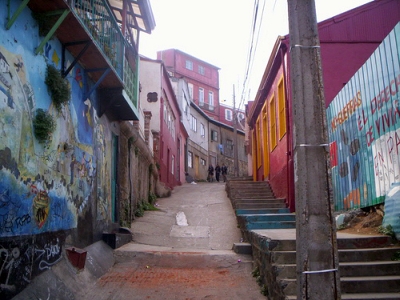 3) Chile
3) Chile
Known for its excellent wine, epic coastline and some of the most untouched wildlife on Earth, this country draws nature lovers from all over. Like most of South America, it’s difficult to arrange a job before arriving. The schools want to meet you face-to-face before hiring, so plan on going door-to-door, handing out resumes and networking once you’re on the ground.
This might sound daunting, but most people are able to find a job within several weeks. Since over 2/3 of Chileans live in urban areas, the capital, Santiago, might be your best bet for getting started, because of the high concentration of English language schools in this area.
The best jobs require TEFL/CELTA certificate and a college degree. If you prefer to go through a program, check out the English Open Doors, a joint initiative between the Chilean Ministry of Education and the United Nations Development Organization. As a volunteer, you can be placed anywhere in the country, from the mountainous Patagonia to the seaside suburbs of Valparaiso. You don’t need a TEFL certificate, and housing is provided with a host family. Don’t expect to build your savings in Chile, but it’s definitely possible to live comfortably with most teaching jobs.
4) Spain
Thoughts of sangria, siesta and sun make Spain a highly desired landing spot for foreign teachers. However, if you’re not from the EU, there’s one hurdle you’re going to have to clear before it all begins: the work visa. In order to legally work in one of the European Union’s 27 countries, you need this important piece of paper. But in order to get one, you need a formal job offer. And now the Catch-22: In order to get a job offer, the employer needs to prove that there isn’t an EU citizen that can do the job better than you. But there’s a loophole. For a monthly stipend, you can teach English through the Spanish government’s North American Language and Culture program, which automatically sponsors the visa for you.
If you want to be adventurous and just show up in Spain without a program, try looking for jobs in Madrid, Barcelona, Bilbao or Seville, which have a lot of language schools and academies. Nowadays, jobs are a bit tougher to find in Spain than they were before the financial crisis, but it’s still possible. You won’t walk away with much savings, but the memories from living the Spanish lifestyle are forever.
5) United Arab Emirates (UAE)
Want a tax-free salary? Get a job in Dubai. This city is a rapidly growing international business and tourism hub, and the demand to learn English is extremely high. Since most of the country’s wealth comes from its booming oil industry, most teaching jobs are at international corporations or universities. The vast majority of jobs require master’s degree, and usually several years of teaching experience. Compared to neighboring Saudi Arabia, women are gaining more equality and opportunities in the UAE, but the different cultural and social attitudes towards them is something that foreign women should be aware of if they are considering teaching here.
[Dubai Skyline by Ross Hawkes/Flickr; Süleymaniye Mosque by laszlo-photo/Flickr; Valparaiso by Dave_B/Flickr]

About the Author

Andrea Moran is the Director for Teach Abroad at GoOverseas.com, a community-driven website of like-minded people who are all passionate about teaching, studying and volunteering abroad. She can be followed on Twitter @Go_TeachAbroad.
The post Top 5 Countries For Teaching English Abroad (That Aren’t in Asia) appeared first on The Expeditioner Travel Site.
]]>The post Welcome To Turkey-Land: First Impressions Of A New Ex-Pat appeared first on The Expeditioner Travel Site.
]]>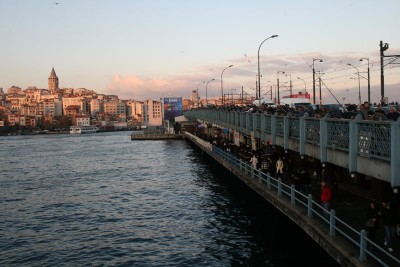
The general consensus is that Istanbul is amazing. “What? Wait. You’re going to Istanbul? OH. MY. GOD. I am so freaking JEAL-OUS!”. You almost just have to whisper the word ”Constantinople” in a room for people to start spontaneously orgasming all over the shop.
Presumably it is fairly un-PC to say, therefore, that for the moment at least, I’m not the biggest fan. I’m not sure quite what I was expecting, but I think it involved a few more turrets, more old men with no teeth sitting on carpets and rather less being cold.
There are some gems I’ve seen so far, indeed, and I fully expect — and hope — to look back on this post in a month’s time and shake my head in shame at this naive version of myself. For the moment, however, I have decided to give myself a little bit of space to be a moaning and disillusioned Brit.
I moved here from London just over a week ago to work for an English-speaking daily newspaper here, based in the ”Media Towers” located about 45 minutes into the city’s boomburb. The publication has a large staff based between here and the capital city, Ankara, with a small number from the U.S. or the U.K. The best thing about the office so far, apart from the stunning view of some large industrial cranes and the airport, is the free gym.
On first impressions, it looked like a perfectly respectable example of a workplace fitness facility. Upon closer inspection, however, this stuff could have come out of the Ark. As I attempted to rev the treadmill — last used by Noah himself — into some semblance of life, an elderly man materialized behind me, hailing from roughly the same era.
From his rather frantic gestures, I gathered that he was keen to show me round. This quickly turned into him putting me through one of the most grueling workouts I have ever had. It is remarkable how much pointing and shouting will drive you into pushing yourself to extent that you emerge, an hour-and-a-half later, with your spine partially dislocated, limbs incapable of anything but the most basic of movements and a sense of absolute accomplishment.
At least if Istanbul doesn’t win my heart I’ll leave with a smashing six pack (and potentially an ancient Armenian body-builder).

About the Author
 A restless Brit with big dreams and limited cash flow, Hannah is an English graduate and former Publicist who has spent the past 18 months living and working in Central America. You can follow her wanderings at TheTangerineRidiculousness.com.
A restless Brit with big dreams and limited cash flow, Hannah is an English graduate and former Publicist who has spent the past 18 months living and working in Central America. You can follow her wanderings at TheTangerineRidiculousness.com.
The post Welcome To Turkey-Land: First Impressions Of A New Ex-Pat appeared first on The Expeditioner Travel Site.
]]>The post Video: The Splendor Of Istanbul appeared first on The Expeditioner Travel Site.
]]>Vimeo artist O.G. headed out into the streets of Istanbul for a few days with his 135mm f/2.8 camera to see what he could find, and this was his product, an amazing visual feast of the going-ons of one of the world’s most intriguing cities.
The post Video: The Splendor Of Istanbul appeared first on The Expeditioner Travel Site.
]]>The post “Turkey . . . By Far.” appeared first on The Expeditioner Travel Site.
]]>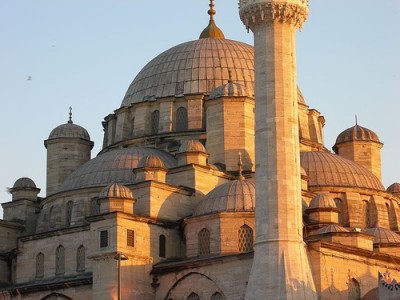
I hadn’t thought much about Turkey until I met a flight attendant named Kevin about three years ago. My curiosity regarding his many travels led me to this one ultimate question: Where’s the coolest place you’ve been?
Let’s cut through all the b.s., right? So, I’m expecting some off-the-radar tropical paradise; a far-flung, white-sanded dreamscape he’d have to explain the location of (he struck me as a beach-goer, ok?). Instantly, and without any hesitation, he stated, “Turkey . . . by far.” This guy has been all over the world, several times at that, and Turkey is “by far” the coolest place he’s been.
I did not see that coming. That’s the reason I took notice of Guardian’s recent article, more a profession of love, which was just too much to pass up. I thought to myself what any other perfectly logical dude would think: prove it.
Picture New York with a 3,000-year-old history and you have Istanbul. Then there are the never ending vistas of the Kaçkar and Taurus Mountains, the coastlines of the Mediterranean sea, pastel-painted underground churches used as christian shelters from ransacking Romans, sunsets on the graceful Grecian ruins where the Virgin Mary spent her last days, and the increasingly popular oil and wine country of Izmir.
It’s Turkey’s culture and history that makes her so attractive today. The face she shows most of us is thoroughly modern – sort of like Italy, but with moustaches and headscarves… a step away from the tourist areas is a Turkey of such original beauty that you’d need a thousand lifetimes to spend here, and there’d still be more to discover.
I know for a fact Kevin didn’t write this article, but the words are eerily familiar to our conversation. I can see the writer’s eyes glaze over as the words flow out from his fingertips, a thousand-mile stare on his face (probably because that’s how I look in the reflection of the computer screen).
Quickly, one word replaces the dreamy images floating around my head: Proven.
The post “Turkey . . . By Far.” appeared first on The Expeditioner Travel Site.
]]>The post When In Rome . . . Eating Like The Locals appeared first on The Expeditioner Travel Site.
]]>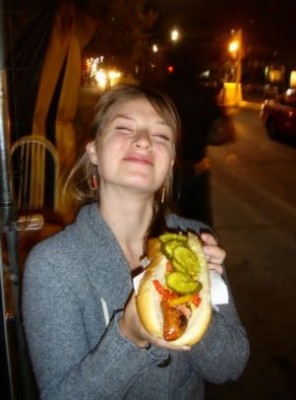
Street food is always going to be a reflection of a city’s true culture. Not only does it give you a glimpse into a local’s diet, but the vendors offer an amazing ambience as well, even the crusty ones. For example, Torontonians and New Yorkers thrive on “street meat” — in Toronto it has been our only street food option for many years due to ridiculous municipal “sanitation” regulations (at least New York has honey-roasted peanuts). Nevertheless, both cities share street meat as one of the most popular eats whether it is midday or post-bar because: 1) the sausages are massive, 2) the vendors are everywhere, and 3) they are so cheap!
Whether it is a skewer of grilled chicken hearts or bowls of chick pea soup, everyone is intrigued and willing to try street food, no matter where they are. So, an article on WorldHum put together the top eight places to get street food and I was not surprised to see which cities made the list. The most obvious winners — like Mexico City and Marrakech — are internationally known as urban hubs of nibble and spice. Some of the cities garnerred a spot on the list because of the ambience of the market and/or the variety of options. Whatever the reason, I wore a bib whilst reading the article. The food that stood out the most to me (that I haven’t already tried):
1) simit – Turkish donut rolled around in sesame seeds found in Istanbul, usually eaten for breakfast with a thick cup of Turkish coffee.
2) harira soup – A Marrakech mixture of chickpeas, tomatoes, onion, cilantro, and tumeric. Everything that is great and good in the world of food.
3) seafood orgy – In Stone Town, Zanzibar, they have all-the-seafood-you-can-eat options. This means higher quality and fresher fish as opposed to the typical “all-you-can-eats” found in North America, which I’m pretty sure are on a rapid decline.
To be honest, I think every city holds a special place on the “street food list,” even if the quality cannot compare to fresh octupus in Palermo, Italy. There is something so comforting about snacking on tacos al pastor on a corner with locals in Mexico City. There is something so exhilirating buying an empanada de carne from a guy on a bike with an overly large front-basket in Buenos Aires. Not to mention, it also supports the local vendors.
The post When In Rome . . . Eating Like The Locals appeared first on The Expeditioner Travel Site.
]]>The post Things To Do In Istanbul appeared first on The Expeditioner Travel Site.
]]>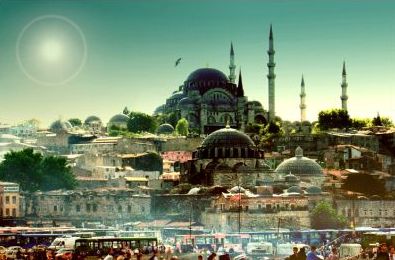
I’ve made a habit before going on a trip to cruise around the online destinations section of newspapers to try to find one or two great articles that I can print out and bring along as a supplement to my guidebook for ideas and tips (which is what I did in Cartagena where I ticked off restaurants named in a recent NYT article — and never ate as well as I did that couple days since).
This week the SMH enlisted the help of a group of insiders in Istanbul to share their favorite local spots around this not-quite Asian, not-quite Eurupean capital of Turkey — a must take-along for anyone heading there soon.
Feeling thirsty and hoping to avoid the “crazy traffic and touristy areas of the old city?” Head to the Cinaralti tea house, a traditional tea house with sweeping views of the old city, or head to Fazil Bey’s Turkish coffee shop in Kadikoy Carsisi market where coffee has been served since 1923, filling the niche in this otherwise tea-drinking nation.
Curious to shop in the “SoHo” of Istanbul? Head to Galata-Beyoglu, the chic shopping destination home to Laundromat Boutique, where you can check out the future of Turkey’s design and fashion.
For the full guide and other tips click through here.
City of secrets
 East meets West … the magnificent Hagia Sophia. Photo: AFP
East meets West … the magnificent Hagia Sophia. Photo: AFP
Nowhere deserves the title of European capital of culture more than Istanbul, writes Jan Morris, while insiders reveal their favourite places.
‘Culture” is a flexible conception but if you interpret it to mean the whole range of human experience and achievement, then nowhere is better qualified to be the cultural capital of Europe than Istanbul, nee Constantinople.
It even looks the part. In all European travel there is no spectacle more tremendous than the sight of Istanbul massed beside the sea – a solidification of history, jumbled houses and docks and palaces along the shore, mighty domes and soaring minarets, ships and ferries swarming everywhere, rumbling traffic over bridges – a timeless metropolis, familiar to travellers for a thousand years and of such consequence that for centuries it was known to half the world simply as “The City”.
Technically it is, of course, only debatably European at all. It is the chief city of republican Turkey, which is not yet a member of the European Union, and it is as monumentally a western gateway of Asia as it is an eastern portal of Europe. The moment travellers step ashore in Istanbul they know they are in a city sui generis, partly familiar, partly marvellously exotic. It has been in its time pagan, Muslim, Christian and officially secular. The most celebrated of all its monuments, Hagia Sophia, began as a church, became a mosque and is now a museum and to my mind this overlapping of civilisations makes it all the more suitable as the cultural capital of a continent becoming inexorably more various as the generations pass.
But still the fascination of the magnificent old place is its Turkishness, the ultimate patina (so far) that covers its successive layers of historical memory. Nowhere in Europe is more suggestive than the rambling enclave that is the Topkapi Palace, where once the Ottoman sultans held court, where the harem gossiped and the executioners sharpened their blades and from whose gardens you can look out across the fateful waters of the Sea of Marmara and the Bosphorus. No refreshment break is more satisfying than a cup of thick coffee and a sweetmeat taken at a table beside the Golden Horn, frequented by seafarers since the days of Homer. You can imagine in these streets the imperial legionaries of Constantine himself, the janissaries of Islam, looting Christians from Venice on their way to the Crusades, merchants from all the nations setting up their stalls in its famous markets.
But presiding over it all, stocky, tough, indomitable, is that easternmost sentinel of Europe, the modern Turk of Istanbul. It is his style, his history, his lively intellectual life, his own shifting circumstances, that qualify the city for its status, in 2010, as cultural capital of Europe. If he needs a text to celebrate its elevation he could do worse than quote an old popular song out of the US: “Why did Constantinople get the works? That’s nobody’s business but the Turks …”
Sahaflar Carsisi (the book market)
In some ways the book market preserves the atmosphere of the bazaar as it might have been two centuries ago, when merchants gathered by their trades and the emphasis was not on tourists. It occupies a courtyard between the Bayezid Mosque and the Grand Bazaar, on the same site as the old Byzantine book and paper market. Overseen by a bust of Ibrahim Muteferrika, the first Ottoman printer, dozens of tiny bookstalls have shelves crammed with textbooks, novels and holy and foreign books. New and second-hand books in English jostle for space in the highly recommended Dilmen Kitabevi bookstore, where a strong-minded reader in search of humour might look out for the almost scholarly Sexual Life in Ottoman Society. Through the far gate you’ll find a tiny market for old coins – a history lesson in itself at this crossroads of continents. – Jason Goodwin
Rustem Pasha Mosque
It is hardly off the beaten track but getting here is half the fun. Rustem Pasha Mosque is a tiny gem squeezed into the bazaar, with its undercroft serving as shops and approached by a winding staircase. You come out on to a raised courtyard, quite unexpectedly – and no wonder, because this mosque was built with characteristic dexterity by Sinan, the great Ottoman architect, in 1563. It is one of the decorative wonders of Istanbul, sparkling with a magnificent array of true Iznik tiles from the greatest period of the tile maker’s art: the rich red colours were perfected at this time and then the recipe was lost. – JG
Hasircilar Carsisi (Strawmat Weavers Market), Eminonu.
Crimea Memorial Church
A tiny fragment in the mosaic of Istanbul’s history, the Crimea Memorial Church was designed by British architect G.E. Street and built in 1858-68 on land donated by the sultan. It is a remarkable survivor from a period of rapid change as the Ottoman Empire opened itself to Western influences. Moribund by the 1980s, the Anglican church was reopened with the enthusiastic help of Assyrian refugees who found shelter here in the 1990s. Look out for Mungo McCosh’s splendidly painted chancel screen and the colourful Sunday congregation (Sunday Mass is at 10am). If you appear nice enough you might even be invited back to the vicarage by Father Ian Sherwood. – JG
Serdar Ekrem Sokak 52, Karakoy.
Jason Goodwin is the author of Lords of the Horizons: A History of the Ottoman Empire and of the Yashim series of novels.
Cinaralti tea house
The post Things To Do In Istanbul appeared first on The Expeditioner Travel Site.
]]>The post Why You Haven’t Really Seen Turkey Until You’ve Seen The Whirling Dervishes In Konya appeared first on The Expeditioner Travel Site.
]]>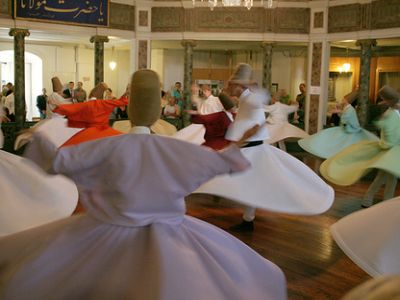
If you stick around Istanbul long enough you’re likely going to run into a Whirling Dervishes performance. But if you want to see the real thing you have to head to Konya, where it all began.
By Inka Piegsa-Quischotte
I have to admit that until I visited the festival in Konya, Turkey, I didn’t have a very clear idea as to what the whirling dervishes were all about. Everybody who has visited Turkey has seen images of guys in white skirts and black conic hats, arms outstretched whirling around their own axis. Although I didn’t think of them as some drug-crazed mystics who danced themselves into ecstasy and oblivion, I thought more along the lines of folkloristic dance. Both assumptions were totally wrong.
It was winter in Turkey — December to be precise — and cold and miserable, so I willingly followed the suggestion of my Turkish friend who suggested I travel from Didim to Konya and experience what he described as, quote: “a unique opportunity to learn about the Sufi philosophy and the significance of the dance at the site where it all originated.” That’s how he put it in his usual rather flowery way of describing things. But then, the man is a poet, so he must be forgiven.
The festival is celebrated each year from December 10 – 17. Konya does have an airport, but given the huge amount of pilgrims and visitors who descend upon the town for the occasion, no flights were to be had, so we opted to go by long-distance coach.
Coaches in Turkey are a very popular means of transport and quite comfortable. One drawback though, as I found out to my dismay, is that they do not have a restroom. So you are well advised to time your “needs” to coincide with the stops along the way . . . and be quick about it lest you be left behind — the bus won’t wait and the attendant counts his passengers after the bus has pulled out of the station.
Konya, the former capital of the Selcuk Empire is located at the foot of the Anatolian mountains, and our bus journey took nearly 12 hours. Fortunately — and given the low temperature that got even lower the further we got away from the coast — the heating worked wonderfully and we could fortify ourselves on board with plenty of hot tea, snacks and pastries, all served by a male “trolley dolly” in an embroidered waistcoat. Konya is quite big with close to 1 million residents, but when we arrived at the station it appeared as if all 1 million were there hurrying about. The crowds were jostling and noisy, and noticeably in a fine, festival mood. Given that it was a religious festival, I was surprised to find the atmosphere to be closer to that of a carnival than of a solemn pilgrimage.
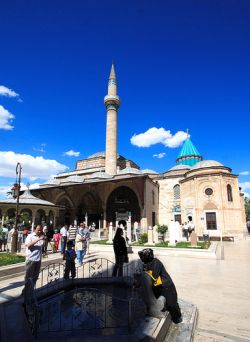 First lesson learned from my poet-friend Mehmet: Sufism and the whirling dervishes are about joy, about love and the celebration of becoming one with God. Gloom and doom or even excessive solemnity have no place in this festival. The venue of the dances is the Mevlana Mausoleum, also known as the Green Mausoleum — ostensibly due to its green-tiled dome. The Persian philosopher, mystic and poet Jalal ad-Din Muhammad Rumi — whose followers and son were the founders of the Sufi Order — came to Konya in the 13th century and was highly revered by the Sultan. He died on in 1273 and is buried in the mausoleum. The sight of his tomb and surrounding chamber, covered in gold and hung with enormous chandeliers, is absolutely awe-inspiring.
First lesson learned from my poet-friend Mehmet: Sufism and the whirling dervishes are about joy, about love and the celebration of becoming one with God. Gloom and doom or even excessive solemnity have no place in this festival. The venue of the dances is the Mevlana Mausoleum, also known as the Green Mausoleum — ostensibly due to its green-tiled dome. The Persian philosopher, mystic and poet Jalal ad-Din Muhammad Rumi — whose followers and son were the founders of the Sufi Order — came to Konya in the 13th century and was highly revered by the Sultan. He died on in 1273 and is buried in the mausoleum. The sight of his tomb and surrounding chamber, covered in gold and hung with enormous chandeliers, is absolutely awe-inspiring.
Mevlana, as he is commonly referred to, taught a version of Islam that puts the emphasis on tolerance, patience, and on attaining happiness through love and the unification with God through constant movement, reflected in the movement of the earth and the universe.
Followers of Mevlana are referred to as the Whirling Dervishes as a result of their ritualistic worship service, the Sema, a whirling, ecstatic dance that lasts for a quarter of an hour and performed to the drone of ancient Islamic hymns with the followers draped in long, white dresses. The Whirling Dervishes undergo a long and ardent education and training before they are able to perform the dance, which symbolizes the road from life on earth to heaven. The word “dervish” means “doorway to God” and Sema symbolizes a mystical journey that ends in the return as a better person.
Upon arriving we squeezed our way into the large hall located in the mausoleum itself and found seats in the folding chairs that surrounded in row upon row the empty space where the dervishes would appear.
The lights were dimmed and a hush fell over the audience. First out from a side door were the musicians who accompanied the dervishes. Dressed in black, they began the ritual melodies which are strange and at the same time compelling to western ears. They play a reed flute, a drum and a one string violin and a praise of Mohammed is sung in the first part of the Sema which is called “Naat.”
Then, the dervishes appear, in single file, their white clothes covered with a black cloak and a black, conical hat on their heads, symbolizing a tombstone. The entire ritual has four parts and after bowing to each other, the dervishes begin their spiritual journey by starting to spin. They turn in ever increasing speed, always from right to left. Their arms, which at the beginning are folded over their chest, stretch out, the right hand pointing heavenwards and the left towards the earth in a symbolic gesture to guide the enlightenment from God towards the mortals on earth. The dance ends with another Naat, prayer and praise of the prophet Mohammed.
Mehmet whispered explanations of the different phases into my ear because the multitude of spectators kept an eerie silence. Nothing but the soft movement of ever faster spinning feet, the swish of the unfolding skirts and the monotonous — and at the same time mesmerizing — sound of the instruments could be heard.
At the end, I literally had difficulty coming down to earth. Mentally, I was still spinning with the dervishes. The physical accomplishment is astonishing. I looked closely, when, at the end, the dervishes bowed again to each other and I swear, they were not even out of breath. Neither did they even once lose their balance.
When we were safely back in our small hotel, I couldn’t help myself. I tried some spinning of my own and was rewarded with Mehmet’s merciless laughter when I toppled after the first three rounds. Seeing the whirling dervishes perform in the place which is most revered by all Sufi disciples, whether they are dervishes or not, is a cultural and philosophical experience which given the chance, no visitor to Turkey should miss.
If you’re in other places — particularly Istanbul — you’ll likely see abbreviated Whirling Dervishes performances, but they lack the spiritual essence you find in Konya during the festival, and they are much closer to a tourist attraction than a cultural experience. For the real thing, Konya’s your only option.

The post Why You Haven’t Really Seen Turkey Until You’ve Seen The Whirling Dervishes In Konya appeared first on The Expeditioner Travel Site.
]]>The post Visiting Santa’s Grave appeared first on The Expeditioner Travel Site.
]]>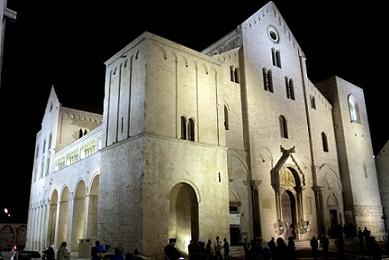
If you wander around the southern Italian city of Bari, you will most likely notice intimate, cobblestoned lanes, cafe-choked piazzas, and one of Italy’s best opera houses. Somewhere between it all, is the Basilica di San Nicola, and the actual tomb containing St. Nick’s bones. Built in 1087, the castle-esqe basilica was created specifically to shelter his stolen remains from Myra, what is now Turkey.
Didn’t know the jolly ol’ fat man was Turkish? The Times also describes a life-sized statue of St. Nicholas outside the church that may change your perception of him a little more. “It depicts a tall, dark man with faraway eyes and an elegant, serious demeanor. It’s St Nicholas — but he doesn’t look like any Santa Claus I’ve ever seen.”
What? No bowl full of jelly?
The post Visiting Santa’s Grave appeared first on The Expeditioner Travel Site.
]]>The post Fear And Bathing In Istanbul appeared first on The Expeditioner Travel Site.
]]>Seeking a true cultural experience, Cameron immerses himself in some uniquely Turkish hospitality in Istanbul.
Face down on the cool, smooth marble slab, I lay hot, sweating and uncomfortable. The air’s humidity has formed into huge balls of condensation which plummet from the domed ceiling high above. When the drops don’t hammer directly onto my head and body, they bombard the slab all around, showering me with tiny staccato splashes. In a desperate attempt to adjust to the heat, my pores open and emit a seemingly endless supply of moisture.
I am alone, and virtually naked. Out of my depth. Unsure of protocol, I shift uncomfortably in the gathered pond of condensation and sweat — and wait. I sense movement around me. At first it is near my feet where they dangle over the rounded edge of the slab, and then alongside my hips, body, then shoulder. Just as I expect it to make contact, the presence retreats. I am tense, alarmed, but not yet scared. But I am absolutely out of my comfort zone. I am out of my comfort horizon. Out of my comfort hemisphere.
To find some sense in the uncertainty I recall all that I know for sure: I am partially covered, but not clothed. I am lying on a marble slab, with my body giving up the last of its essence. I feel abandoned, but a presence lurks just out of reach. My verdict: I am dead. The adventure ends here. Without a fight, without a whimper. But other factors conspire to contradict this conclusion: I am not cold — as I would expect to be in death — but in a warm place. My body does not give up blood and excreta, it only offers sweat.
But as I begin to think that I may not yet have reached the end of my life, the presence returns, this time beside my head. The first words are deep, husky, and tobacco-stained: “I am here”.
Is this the voice of death? The gruffness, the nicotine, the impatience confirms what I’ve always suspected: that when I die, as I may yet have done on this day on this lonely marble slab, then I am not heading upwards to the guy with the long white beard. Because the voice in my ear is surely the voice of the other guy. The underlord. The devil himself.
Before surrendering to an afterlife of sweat and toil, of misery and labor, I awaken to recall my circumstances more clearly: the smell of diesel and the shisha pipe, the street noise of cars, carts and bartering, and the deep rumbling of Arabic-laced debate. I am far from hell. I am in Istanbul, near the Kapali Carsi, the Grand Bazaar. In a hamam — a Turkish bath house. And rather than being banished here to pay for my sins I came of my own free will — albeit nervously — for an authentic Turkish experience, and to escape the alma chai (apple tea) and hounding of the carpet sellers.
 Hamami are found in most major cities and towns in Turkey. While hamami in the city are larger and more elaborate than those in the smaller towns, all typically feature private, individual cubicles for dressing and undressing, with a central and communal bath house. The hamam in which I endure Hamid’s attention has a grand central chamber with an ivory-white, curved marble stage which easily accommodates more than 30 bodies.
Hamami are found in most major cities and towns in Turkey. While hamami in the city are larger and more elaborate than those in the smaller towns, all typically feature private, individual cubicles for dressing and undressing, with a central and communal bath house. The hamam in which I endure Hamid’s attention has a grand central chamber with an ivory-white, curved marble stage which easily accommodates more than 30 bodies.
When seeking out a venue for this experience, I had sought the guidance from the manager of my hostel who strongly advised that I visit a “tourist” hamam. Uncomfortable with further questioning on the subject, he simply re-iterated: “For tourist, only. Please.” Perhaps the “tourist” masseuses spoke English (clearly not), or perhaps they provided an abbreviated and less vigorous version of a traditional Turkish bath. I can only wonder what the traditional service entailed.
Relieved that my end is not yet at hand, I relax back into the puddle of condensation and sweat, breathing in the hot, retching stench of dozens of perspiring bodies. Brilliant white light streams through the star-shaped holes in the domed ceiling, illuminating the strange, exotic chamber of maleness around me.
The voice of death turns out to be Hamid, my appointed masseuse, who’s English is on a par with my Turkish, which is to say next to zero. Our conversation is sparse. Even if we’d had a shared language I wonder how we’d ever find anything at all suitable to discuss in this odd situation: a large, dark, hairy, Turkish man, scrubbing from head to toe a somewhat anxious (but fast becoming very clean) blonde Australian wearing only a small piece of patterned cloth and nervous smile.
Called a pesternal, the cloth wraps around my waist with less than an inch overlapping — making any form of fastening marginal — and extends barely beyond my now trembling buttocks. The cloth is a futile effort at dignity, and Hamid appears to be wholly ignorant of its purpose as he works around, over and underneath it. The pesternal is a largely redundant adornment and affords little modesty in the bath house. Despite the texture and atmosphere that it might add to this story, the sight of dozens of sweaty men, each wrapped in a virtual handkerchief, is one best left undescribed. But for the curious, be satisfied with this: the hamam is full of men of all shapes, sizes and fitness, in various stages of bathing, absolutely unconcerned about the sights they display when bending or sitting carelessly.
“I am Hamid. Ha-Meed,” he repeats slowly. I am only slightly comforted by his attempt at formalities, and remain in what I feel to be a very vulnerable situation. Aside from a guidebook explanation, I have little idea of what a traditional Turkish bath actually entails. Hamid’s next words push me over the crest of fear, into the abyss of panic. “I give you special service.”
I am terrified. I am defenseless. I do not understand. What exactly does “special service” mean? I lay there and nurse myself back into the now warm, safe idea that maybe I am dead after all.
Over the next half-hour Hamid — bare-chested, his own pesternal giving only partial coverage to his ample girth and undercarriage — washes, scrubs, and rinses my body with warm water that he collects in a plastic bucket. The temperature in the hamam has risen and condensation runs like a river down the concrete walls, drips off the ornate windows, gathers in the cracks in the floor, and drains away.
Scraping along my forearm with a short plastic tool that resembles a small ruler, Hamid holds up before my eyes a dark brown sludge that had until now resided merrily undetected in my pores, resistant to the more conventional washing arrangements of soap and hot water. Squirting shampoo from his small pink tube onto my head, Hamid proceeds to give my hair a vigorous and thorough wash. With my hands over my eyes, the warm water running over my face, I regress to infancy, Hamid replaced by an over-zealous grandmother with an obsession for clean children.
To describe the experience in full would be to lift the veil and remove the mystique of this most exotic experience. It is simply one of those times when you must suspend disbelief and discomfort and plunge in to find where the real cultural flavor resides.
Having survived the hamam I emerge back into the chaos of the street considering the idea that it is only by confronting fear — and potentially the devil himself — that we feel truly alive. After months on the road, the bath has provided a feeling of renewal and rejuvenation. I feel cleaner than ever before and am convinced that Hamid’s efforts have actually removed a number of freckles. The hamam is a revitalizing exercise, a confronting and potentially terrifying experience, and uniquely Turkish. And all for $30. Oh, and another $10, as a tip, for the “special service.” Whatever that was.

The post Fear And Bathing In Istanbul appeared first on The Expeditioner Travel Site.
]]>The post Where’s The Best Street Food In Istanbul? appeared first on The Expeditioner Travel Site.
]]>The Guardian’s posted this great video about the best places for street food in Istanbul. Check out the fish sandwiches served from the “sultan boats” near the golden horn at 4:46. Not recommended for those with weak stomachs.
The post Where’s The Best Street Food In Istanbul? appeared first on The Expeditioner Travel Site.
]]>The post Summer Spotlight: Turkey appeared first on The Expeditioner Travel Site.
]]>For an Australian’s view of the country . . . (highlight: Gallipoli at 2:14, site of where thousands died during WWI) . . .
. . . and a look at the boatload of history one should be prepared to take in while visiting . . .
. . . and for you nature-loving, ping-ping playing, relaxation types, head to Olympos for a backpacker’s paradise.
The post Summer Spotlight: Turkey appeared first on The Expeditioner Travel Site.
]]>The post Come Check Out Ankara’s Nightlife, You Won’t Forget It appeared first on The Expeditioner Travel Site.
]]>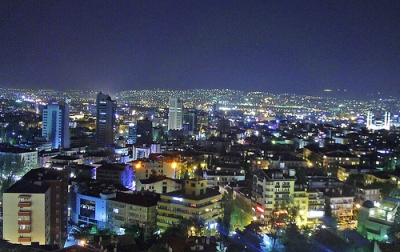
Ankara may not have the concentration of throbbing clubs and number of partygoers as its cosmopolitan counterpart of Istanbul has (Ankara may be Turkey’s capital city, but Istanbul is the country’s largest ), but there’s still a thriving bar and music scene in the city, you just need to know where to look. For a helpful rundown of the city’s best nights spots from those in the know, see this list over at VirtualTourist (the consensus seems to be to head to the neighborhood of K?z?lay).
For a first-hand look at what the city has to offer after the sun goes down, check out Juha’s adventure out on a Saturday night as he gets down to a zither-driven band, takes a load off at a trendy lounge, and is entertained at dinner by a guitar duo playing music that reaches decades into Turkey’s past.
“One could clearly hear the Andalusian sounds in the guitars influenced by the Moorish conquerors of the Iberian peninsula since the eighth century. Such was the influence of Arabic culture all around the Mediterranean in its heyday and the Ottomans much later.”
The post Come Check Out Ankara’s Nightlife, You Won’t Forget It appeared first on The Expeditioner Travel Site.
]]>